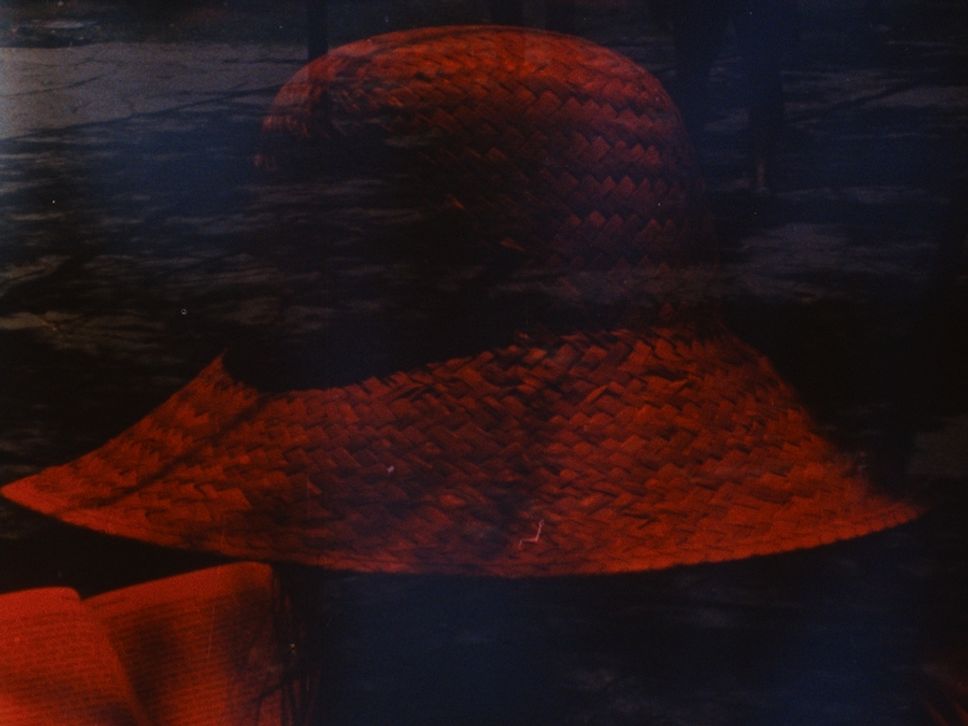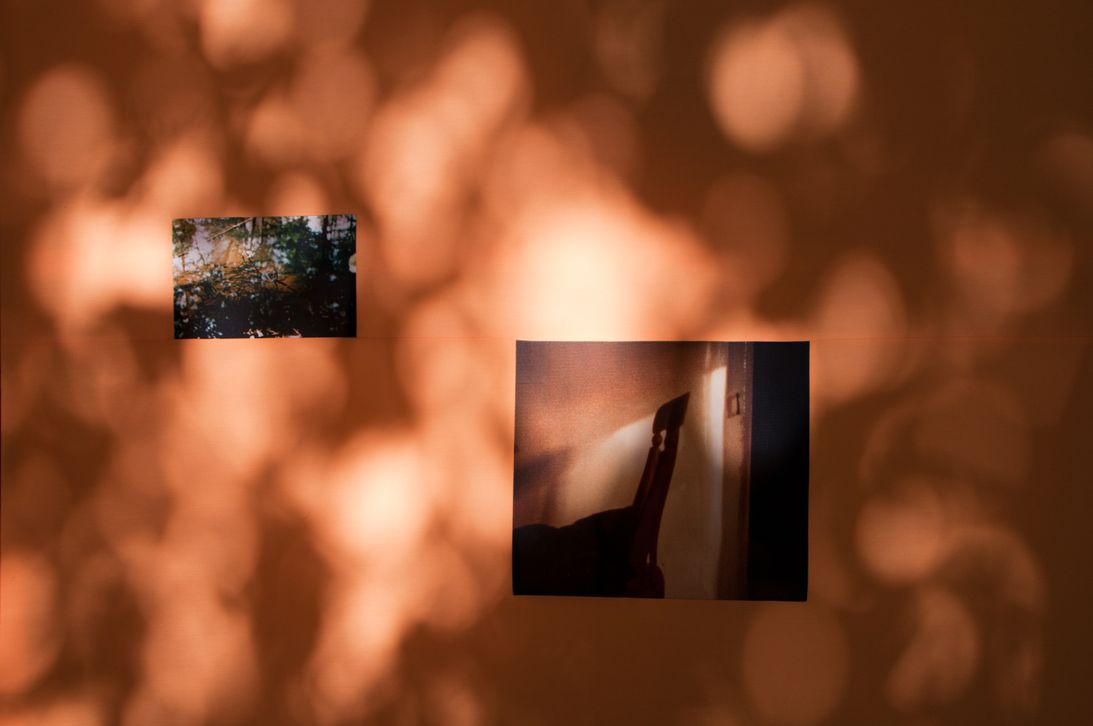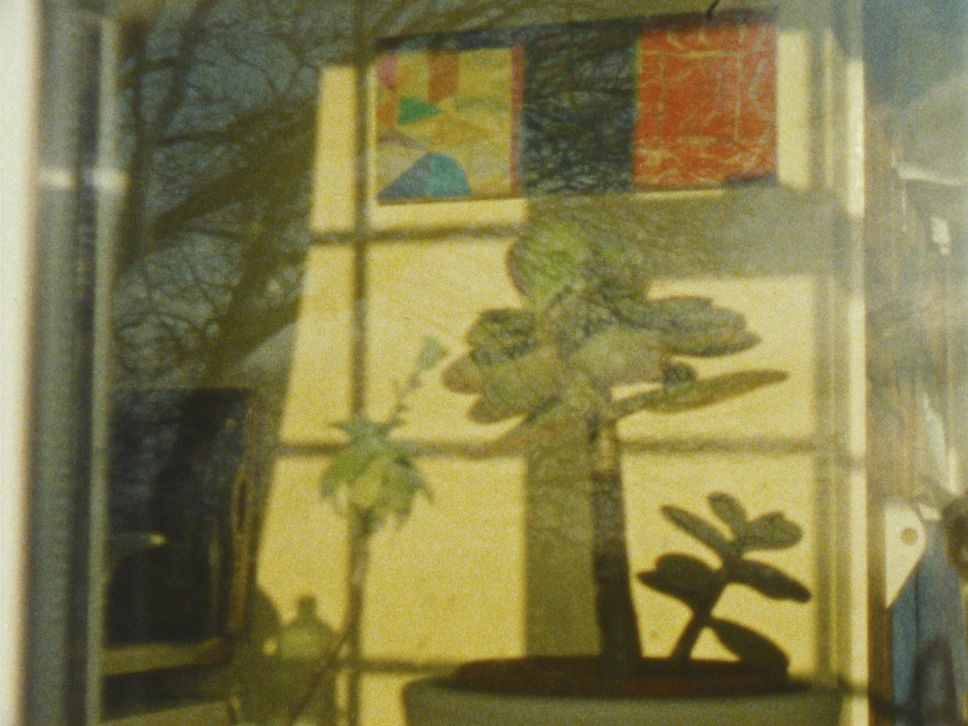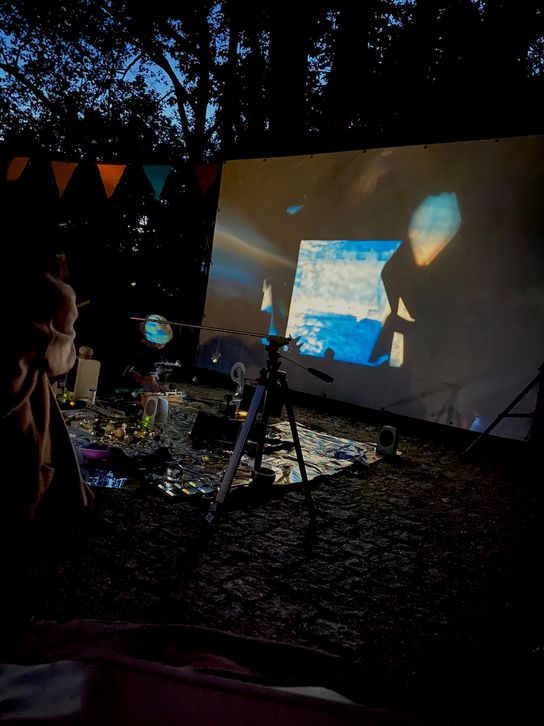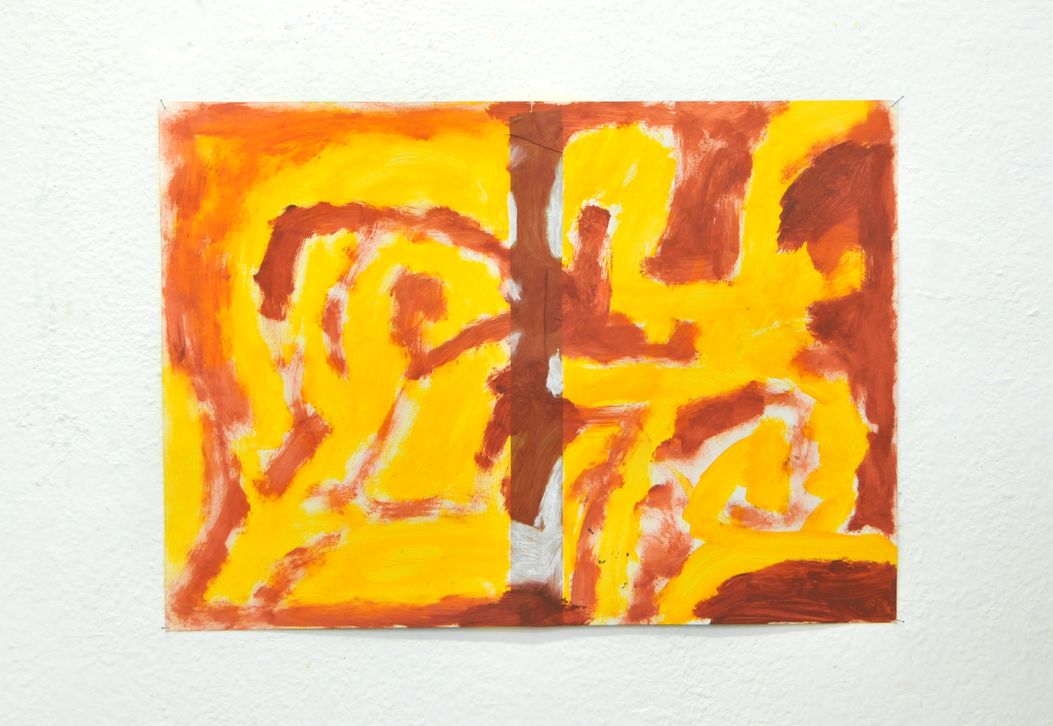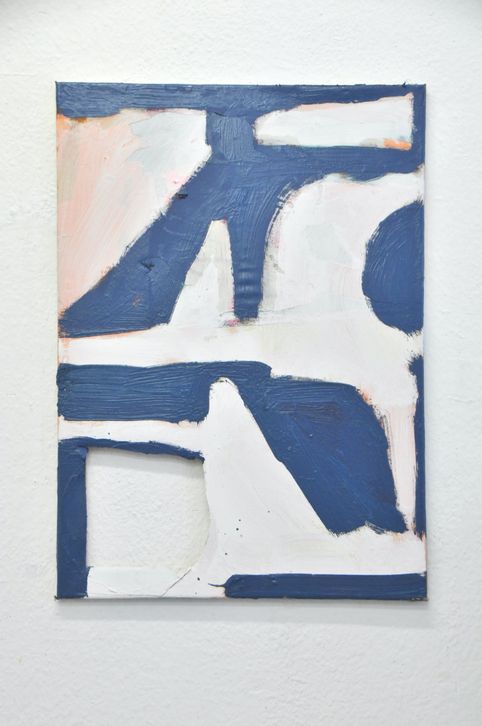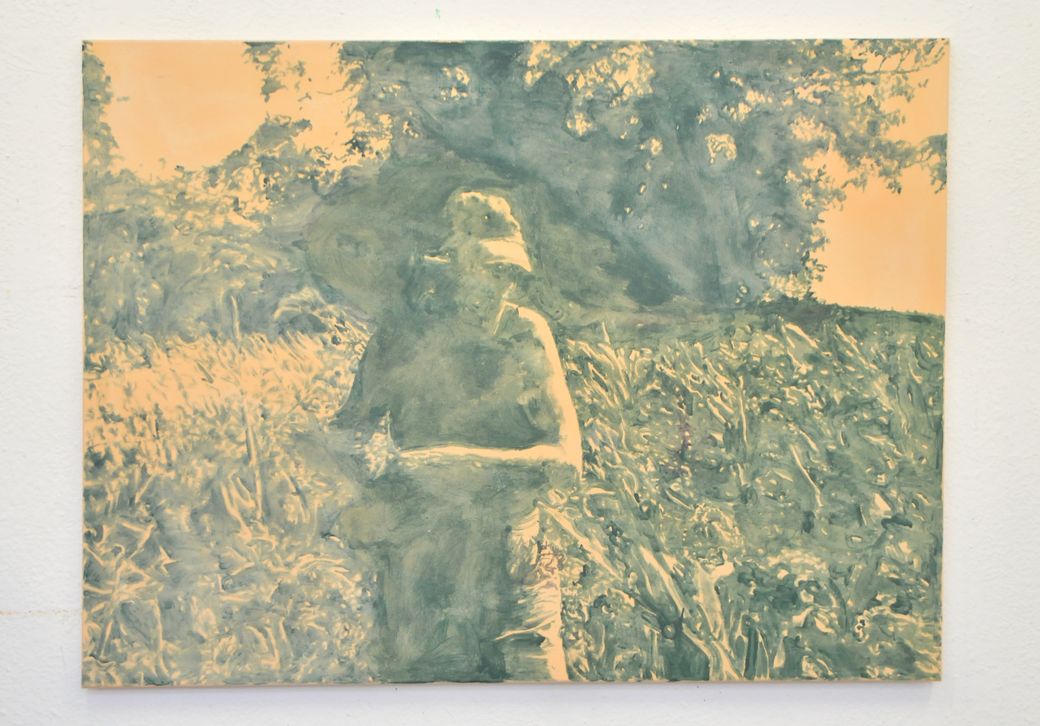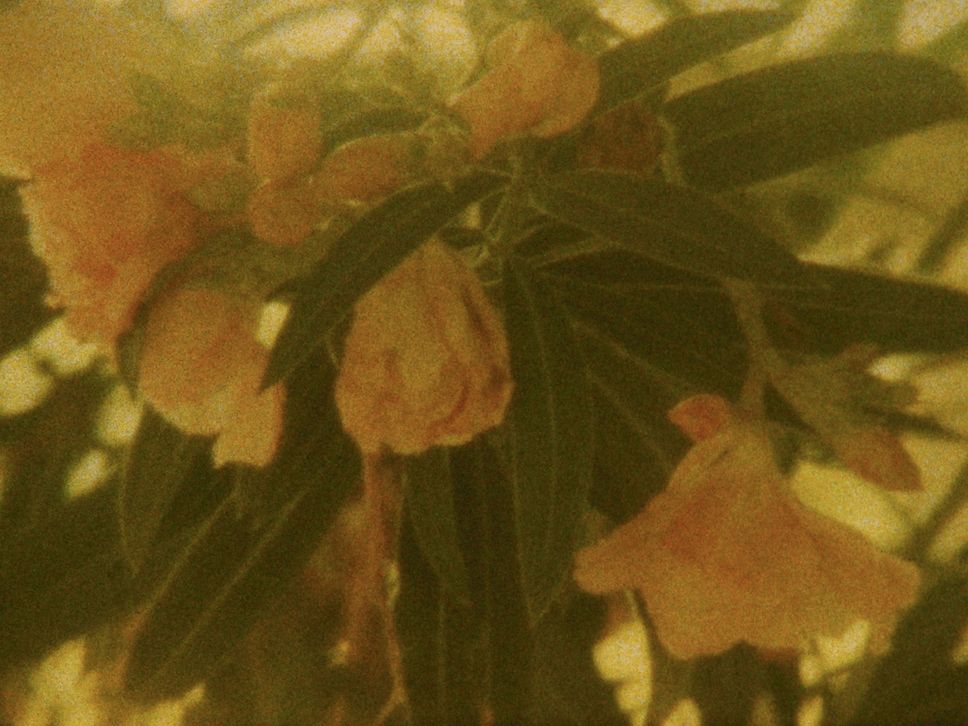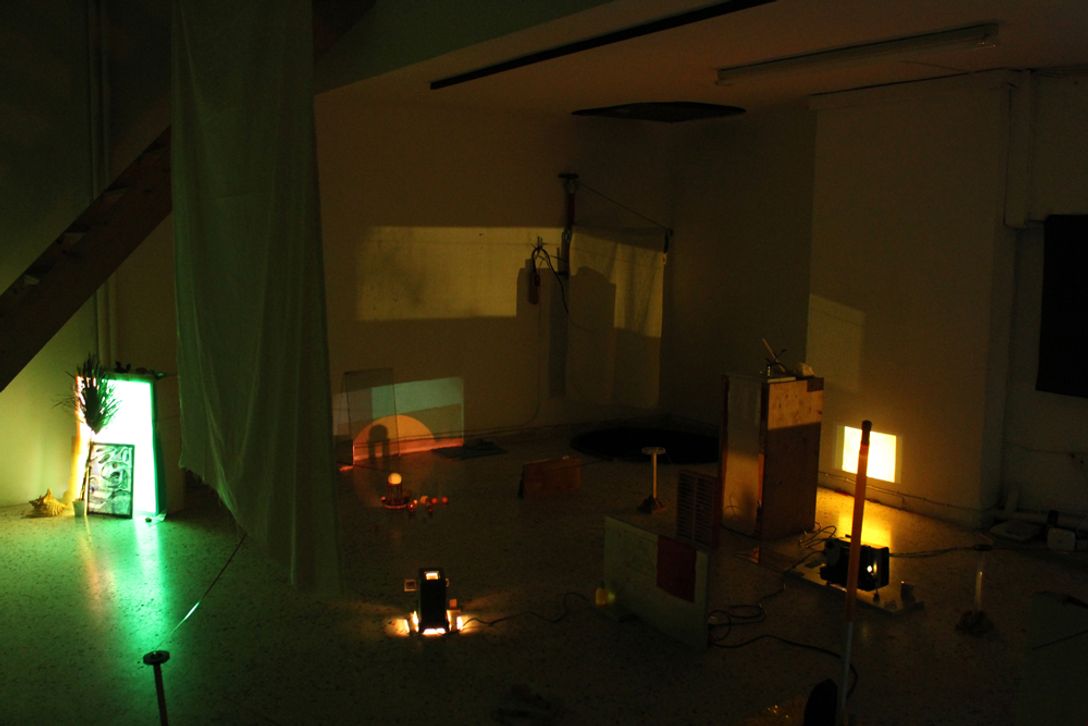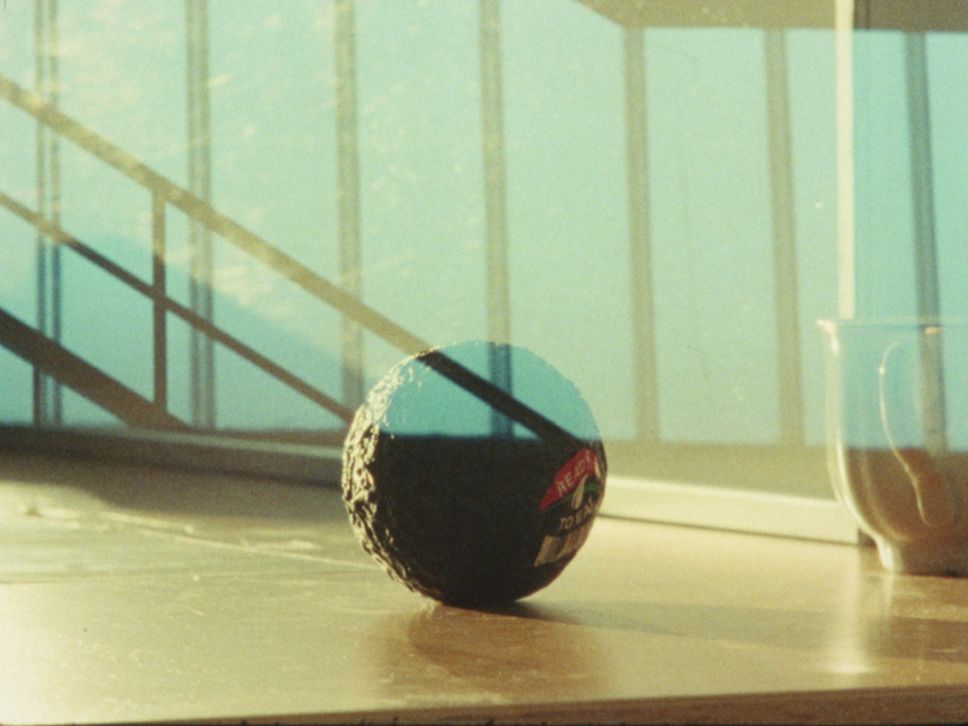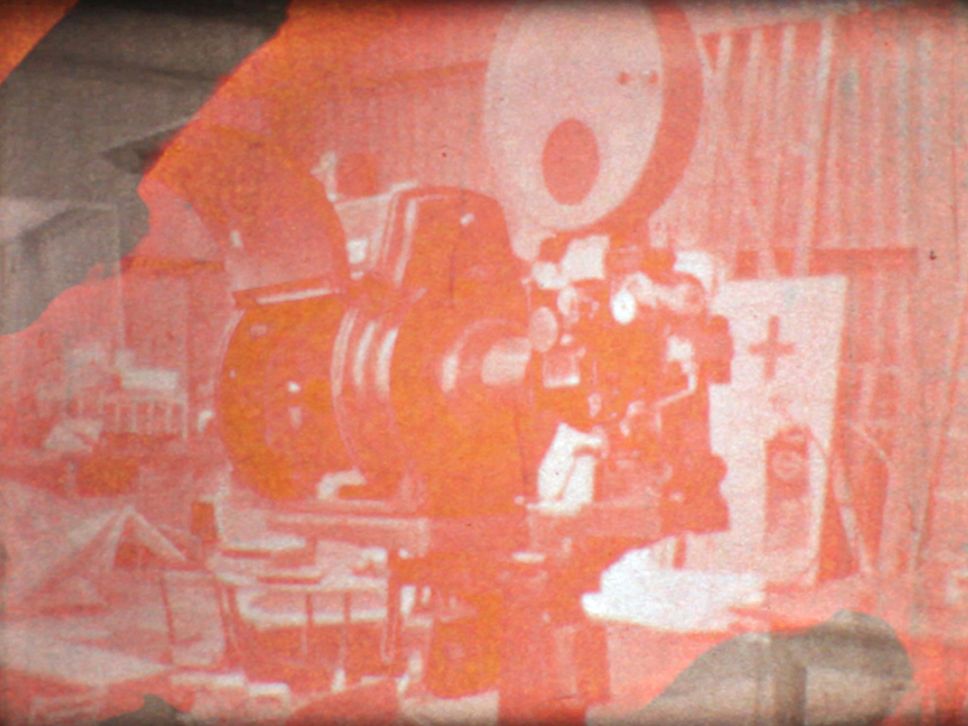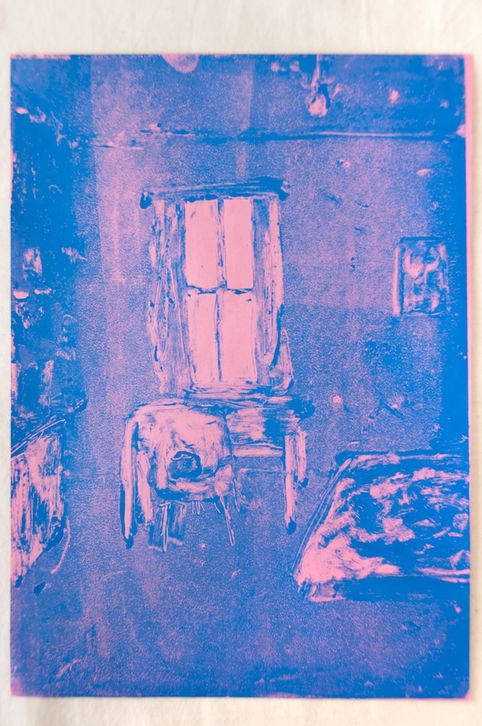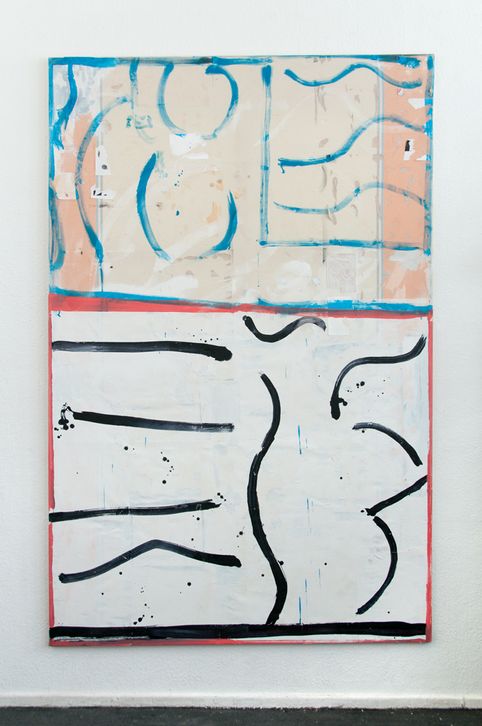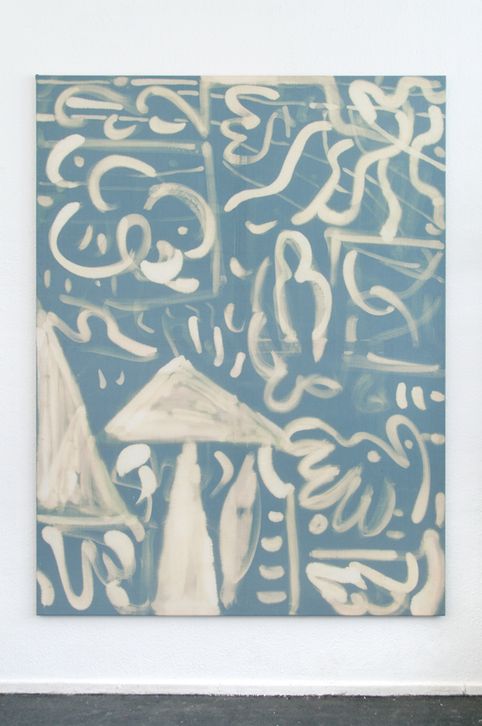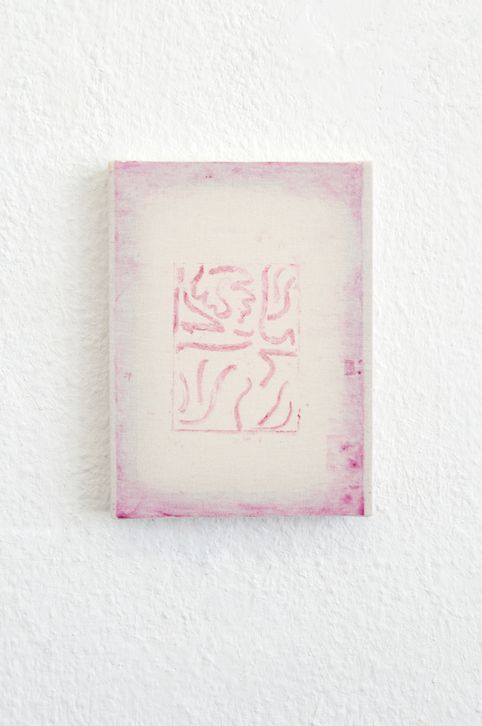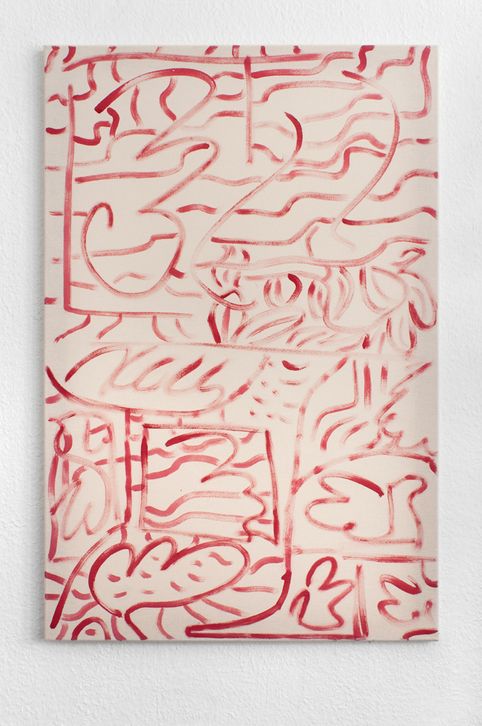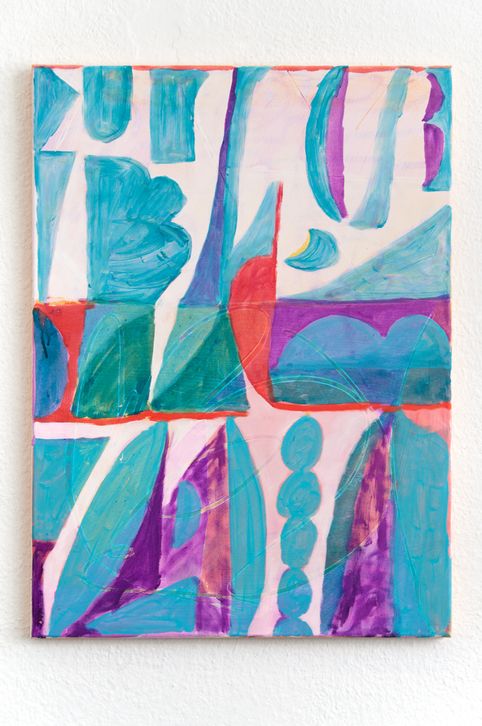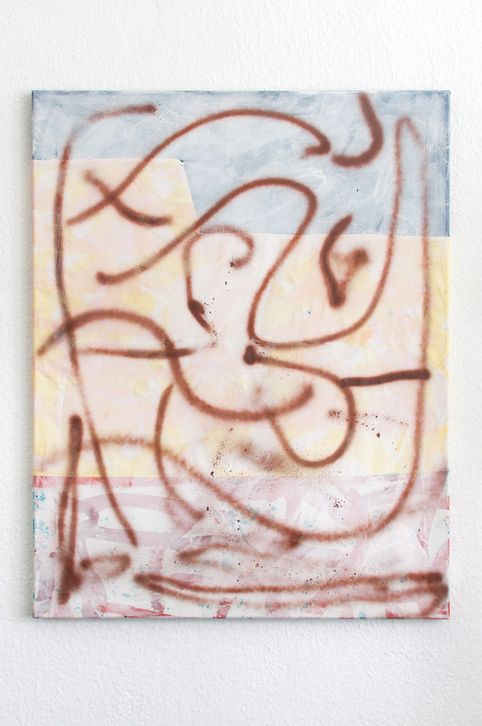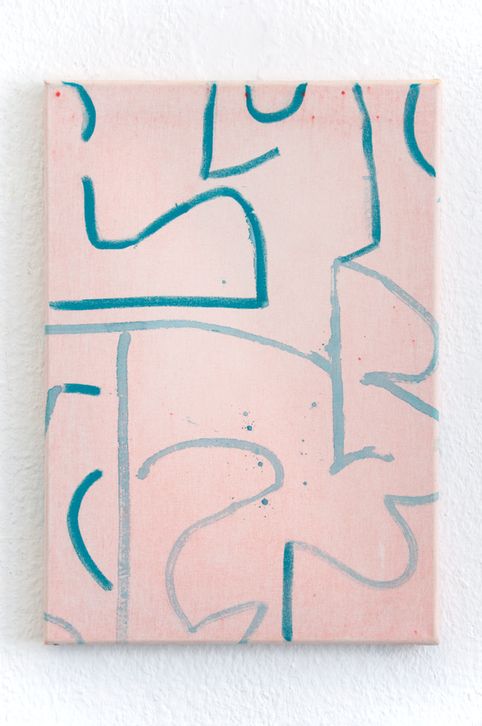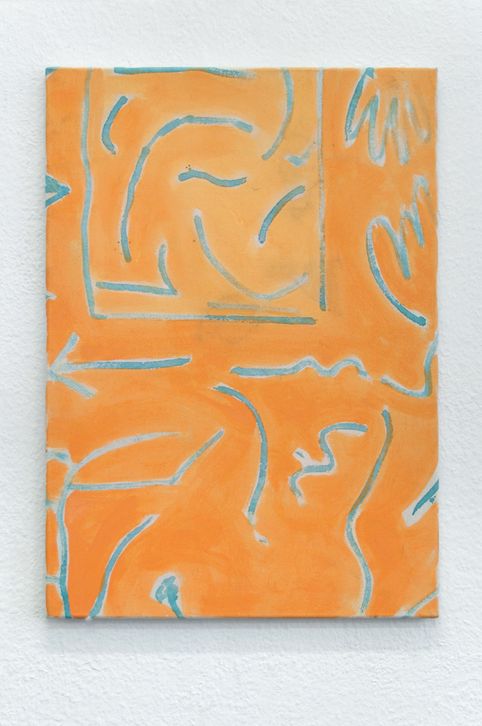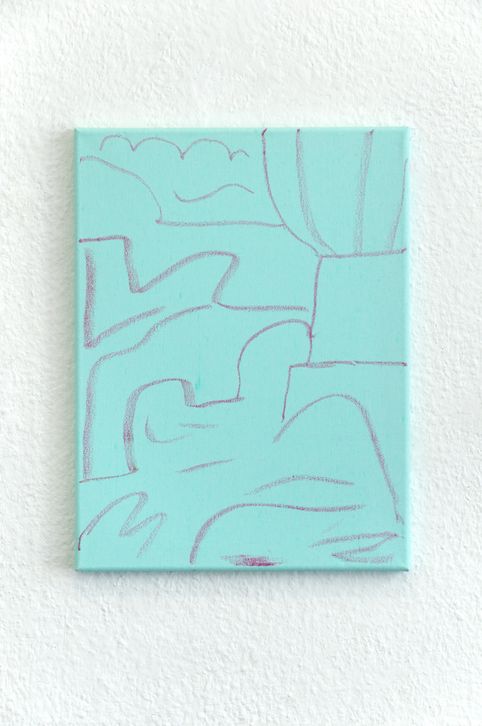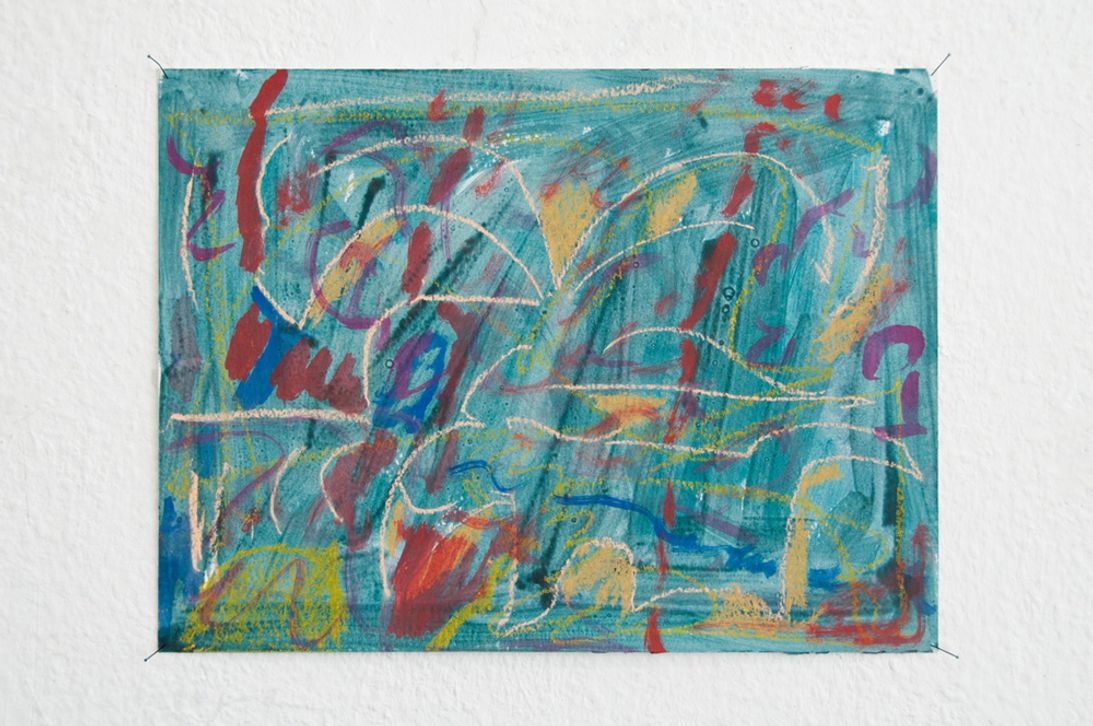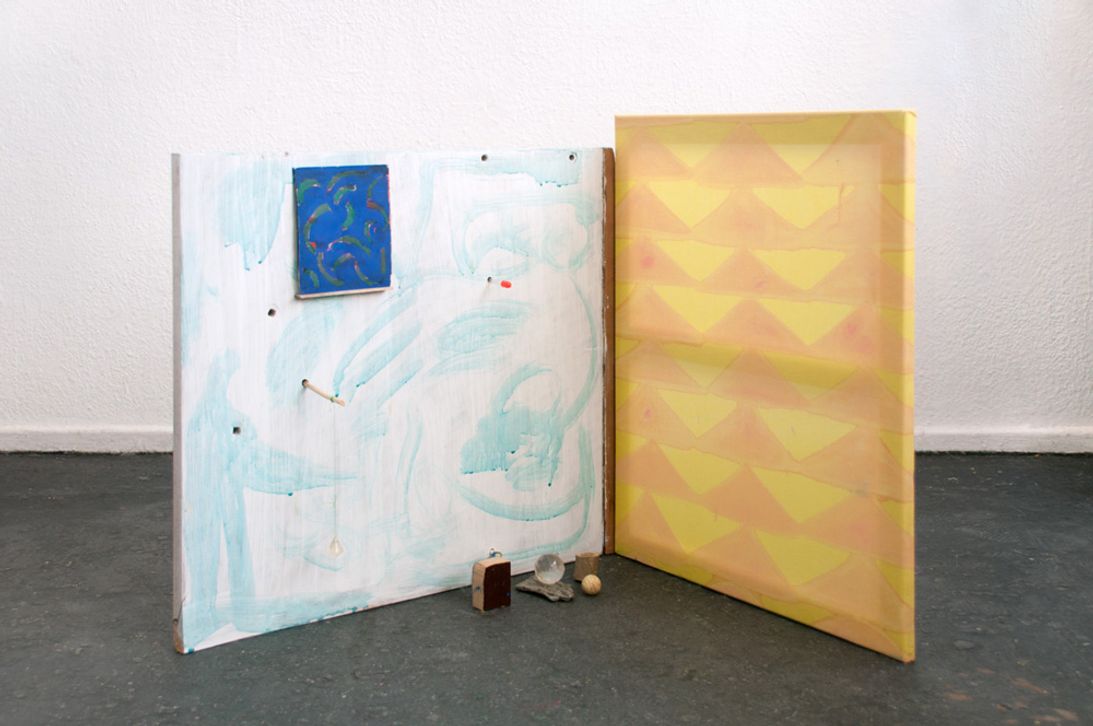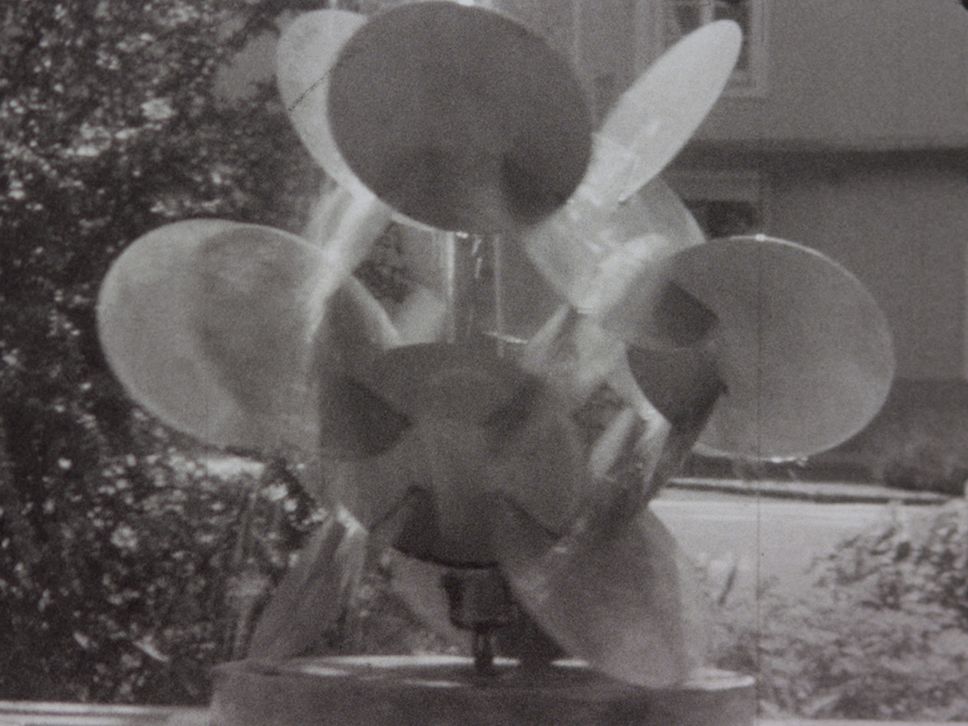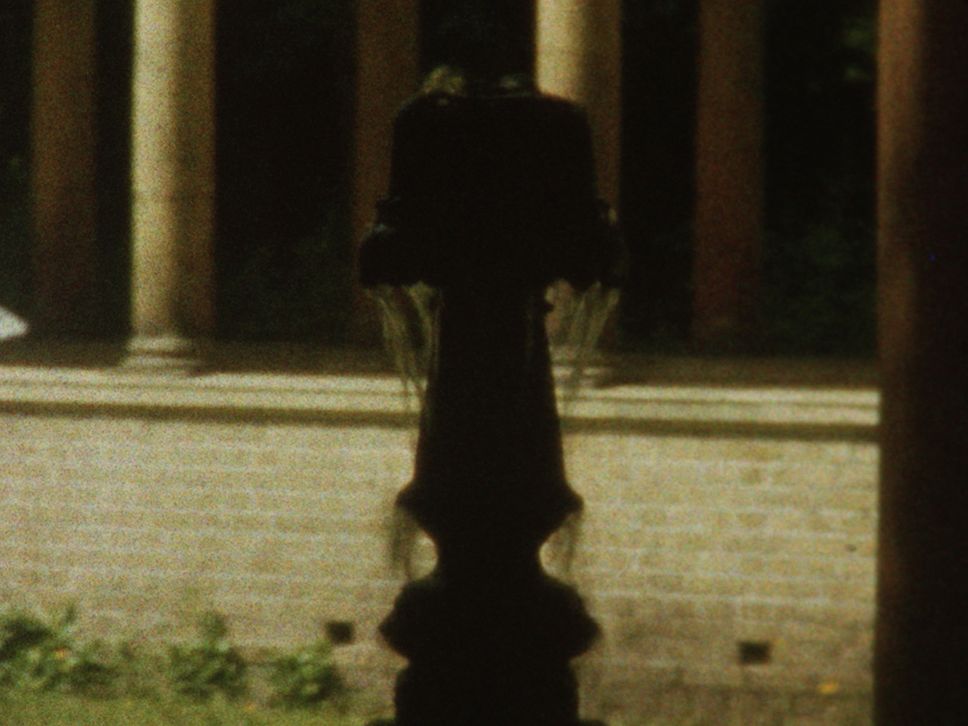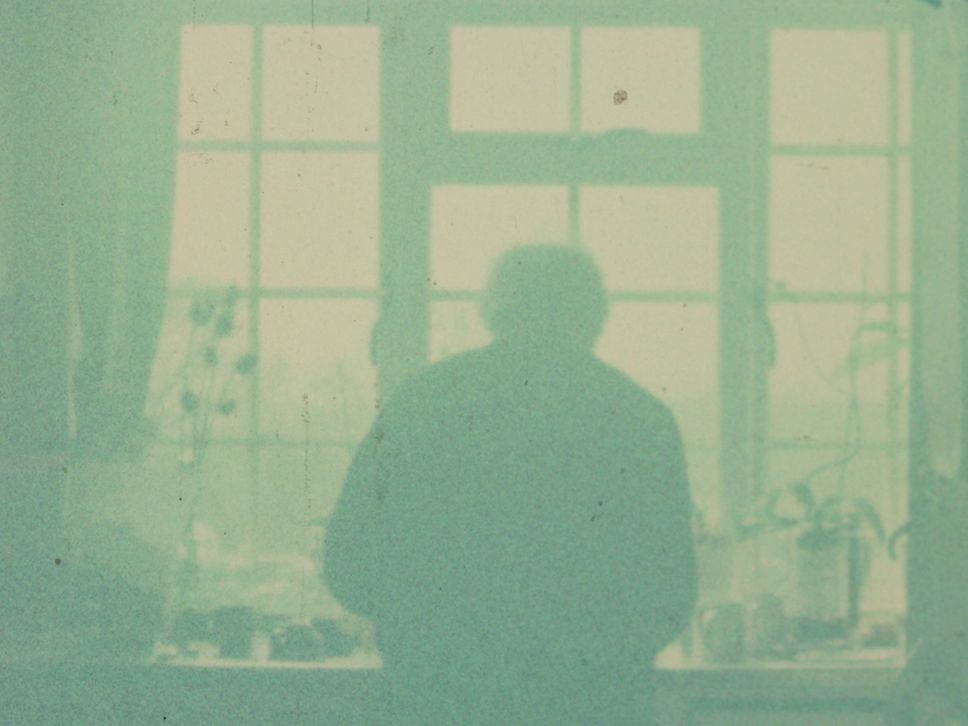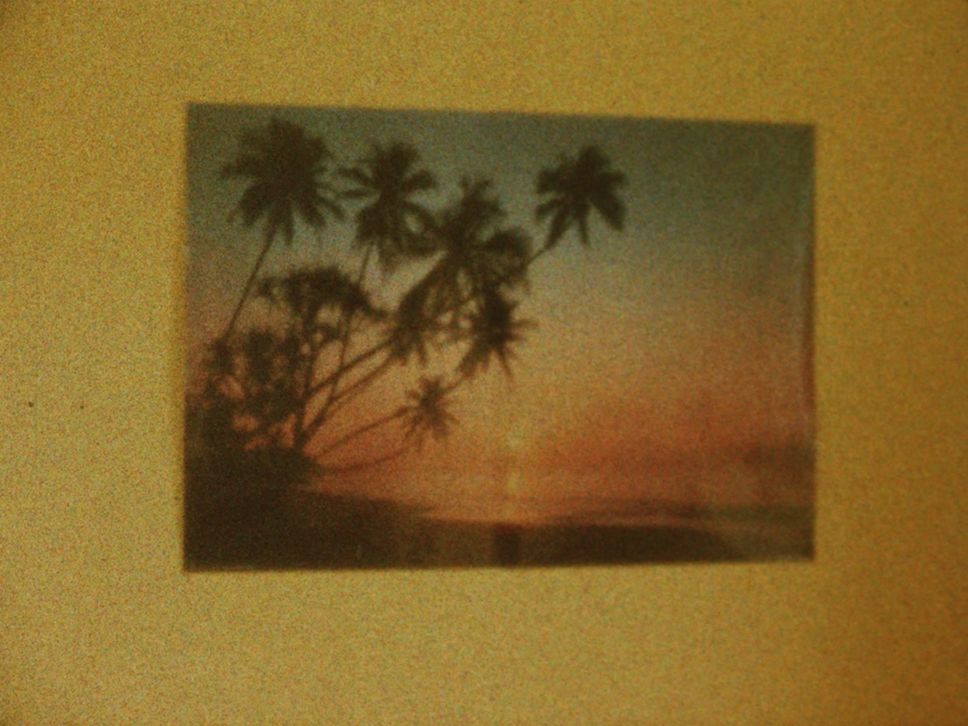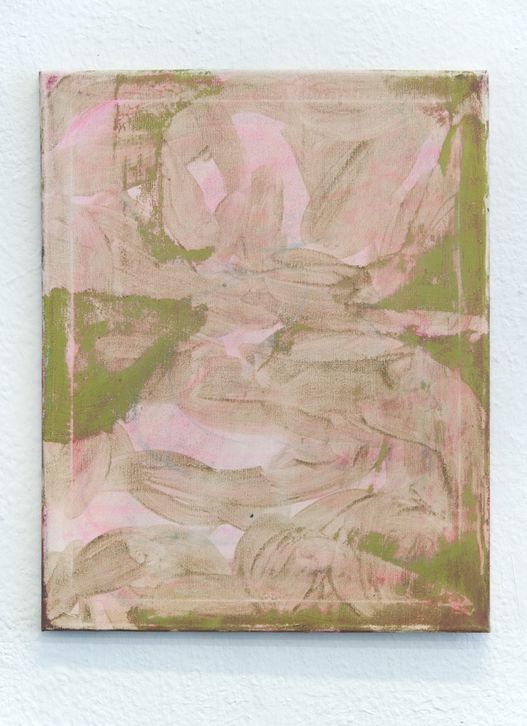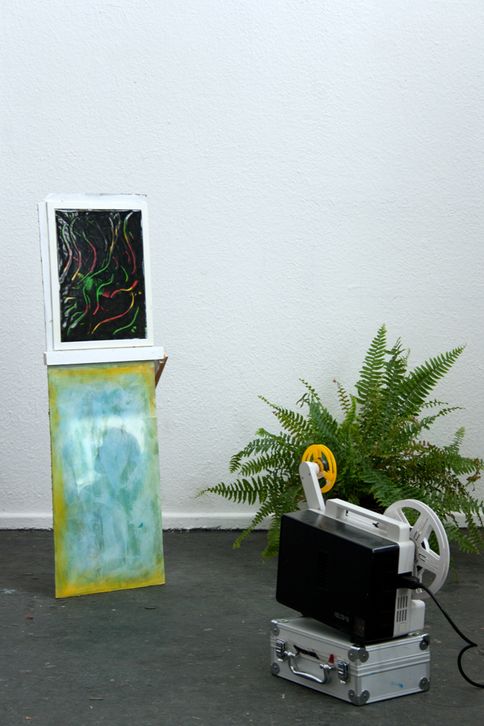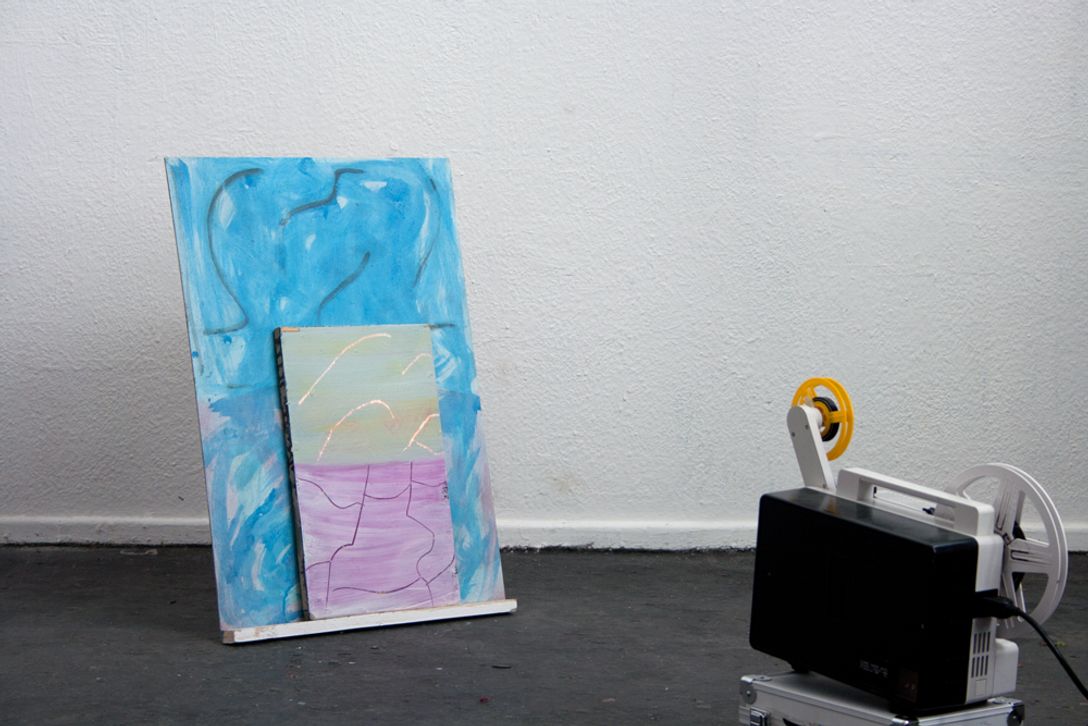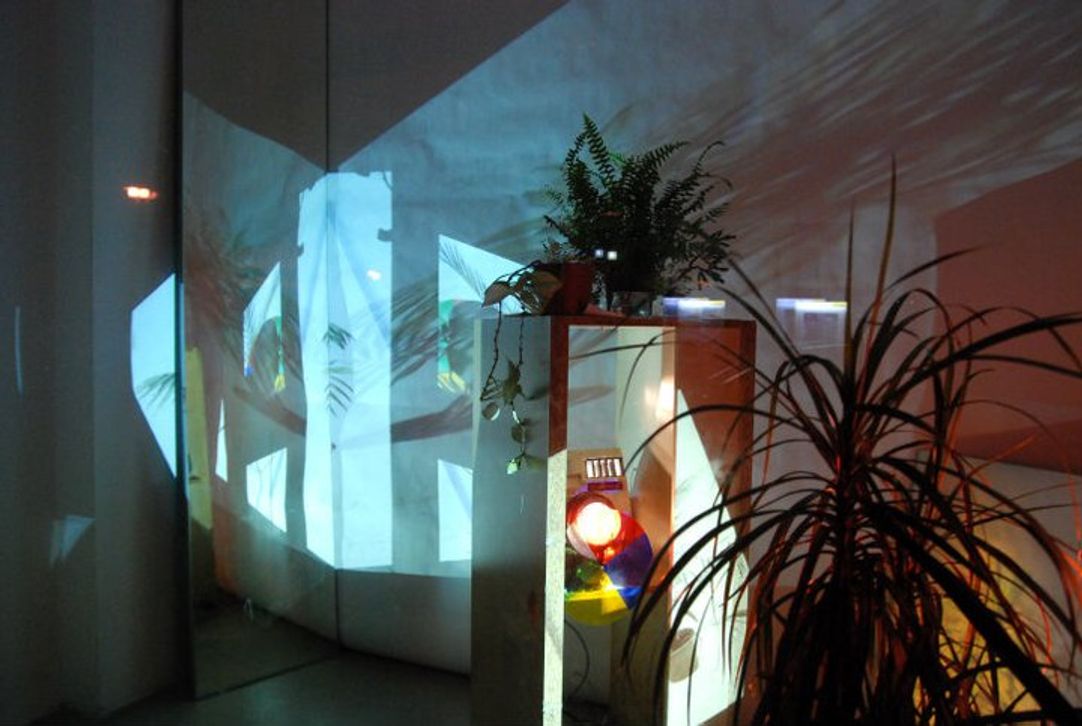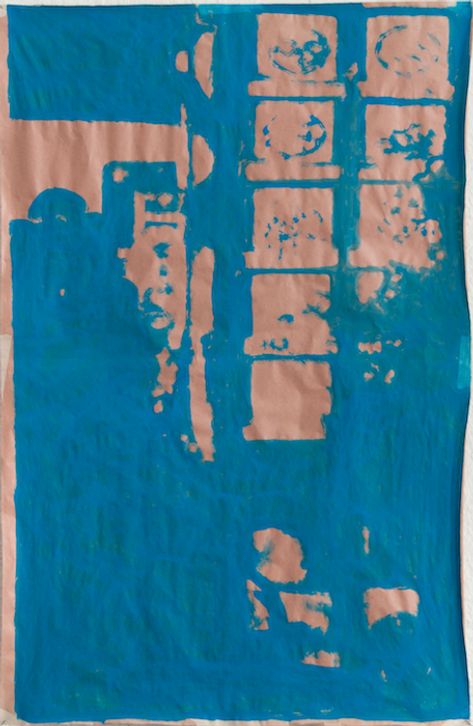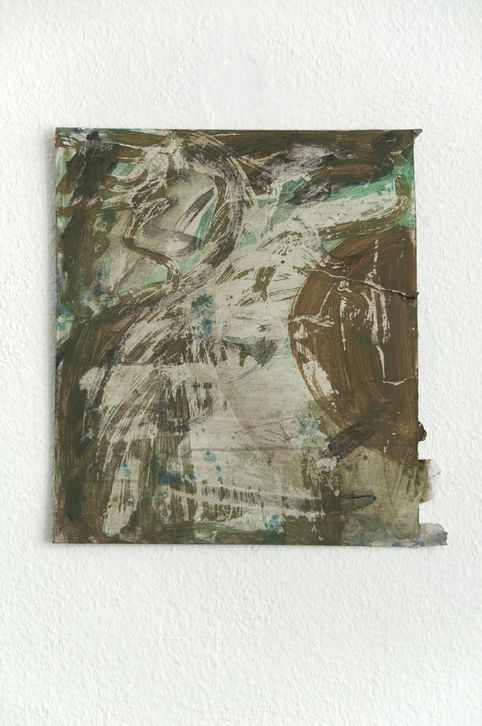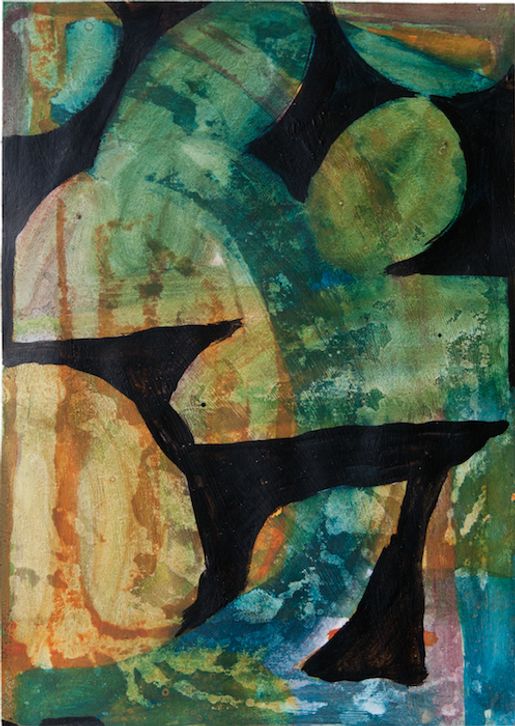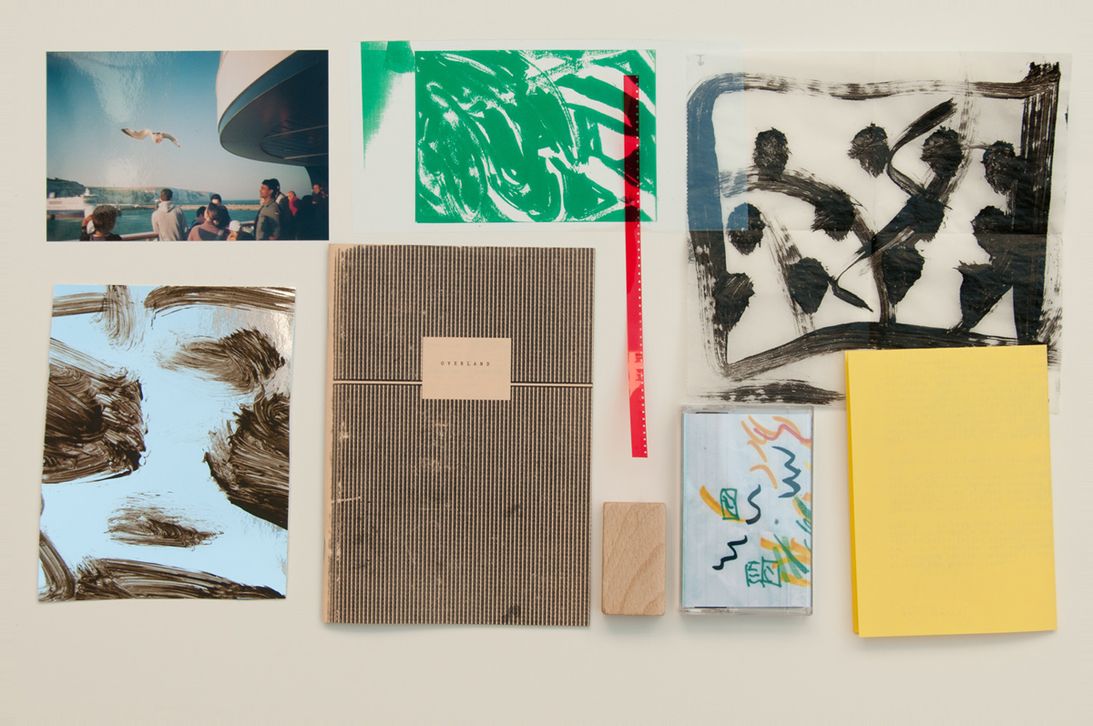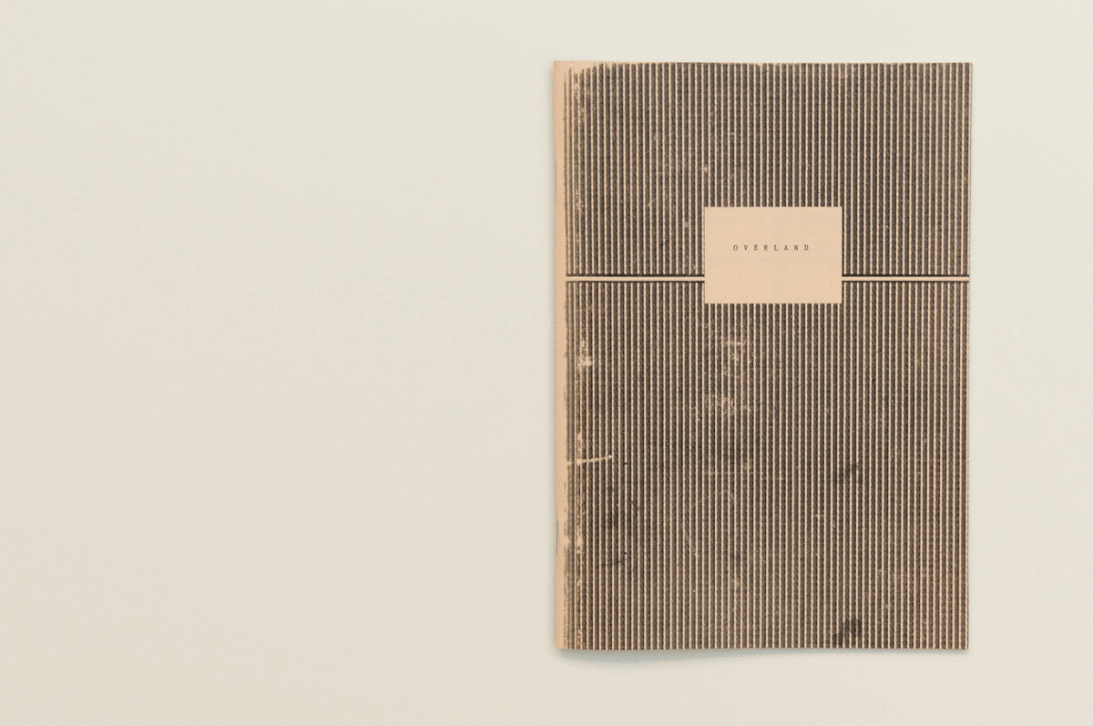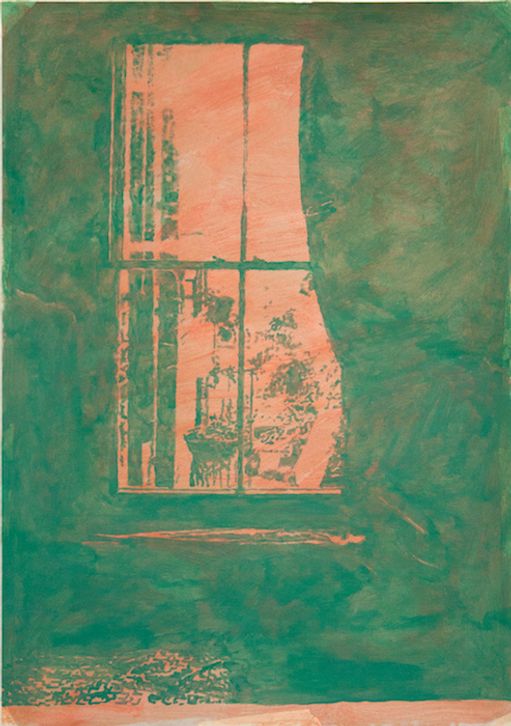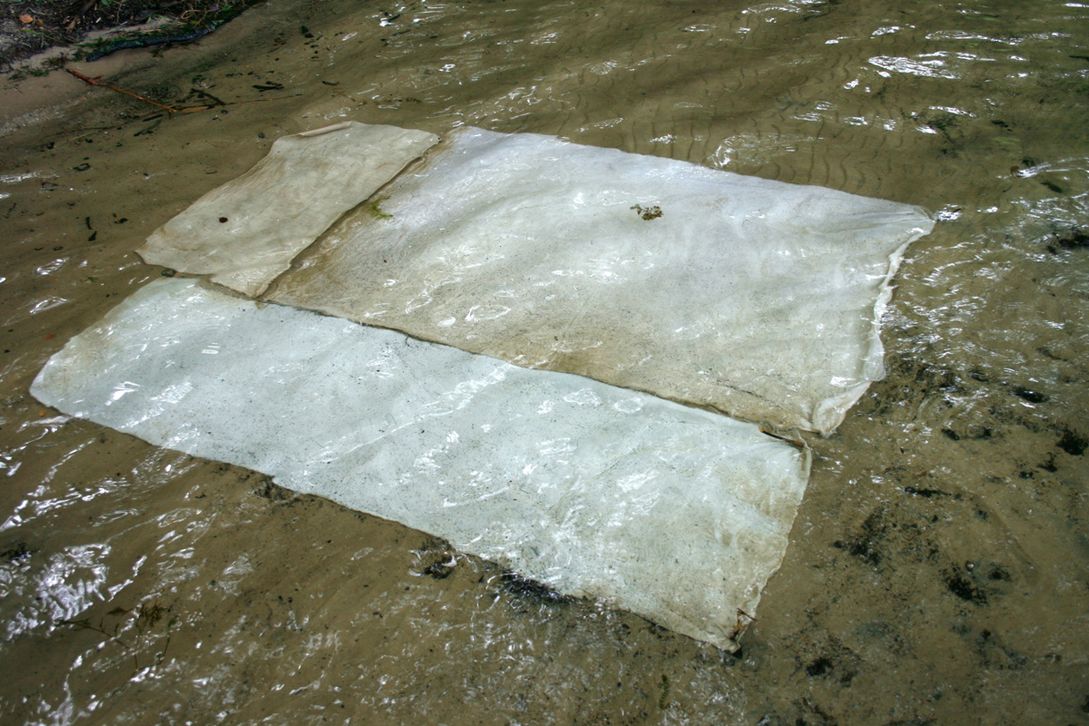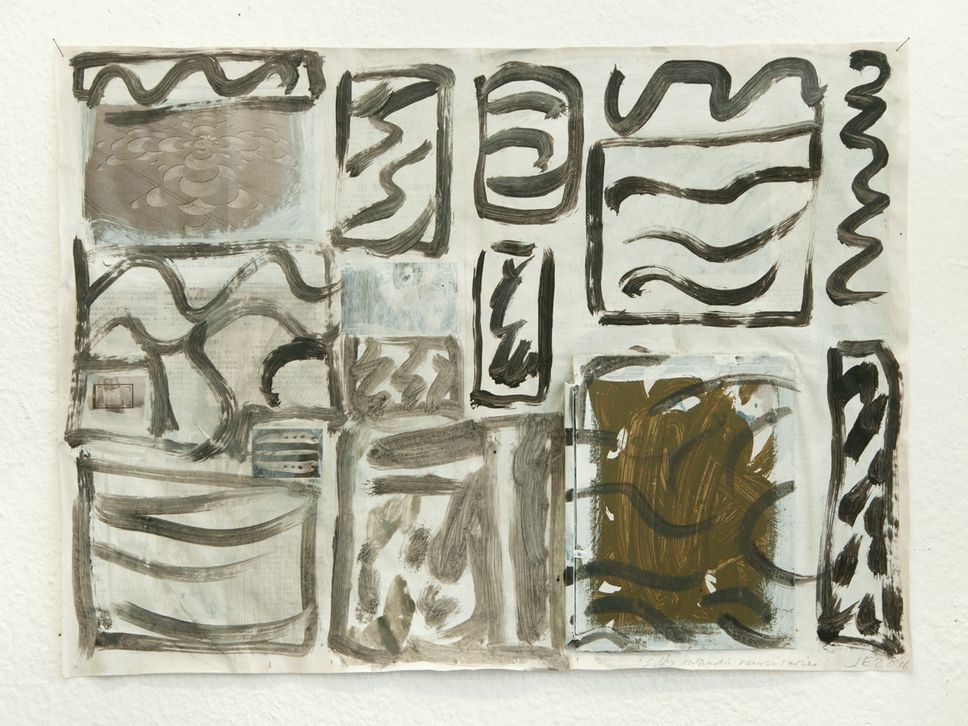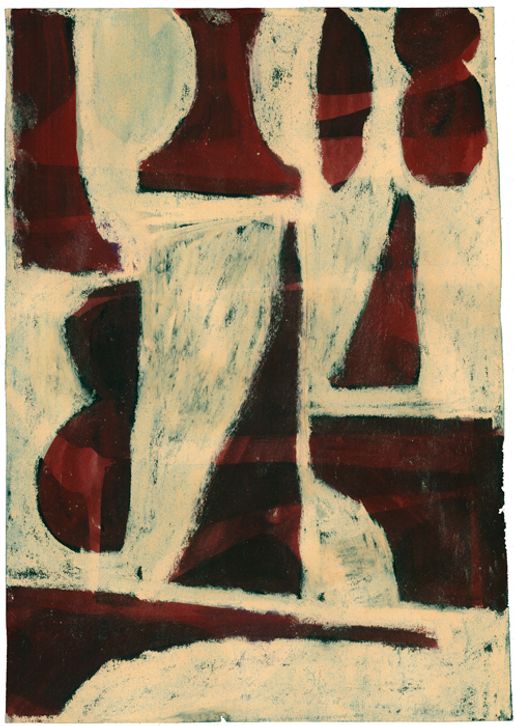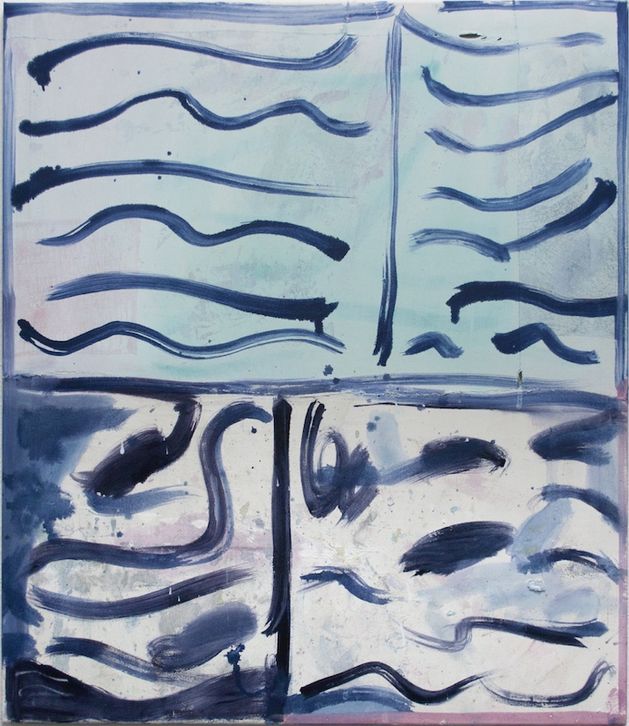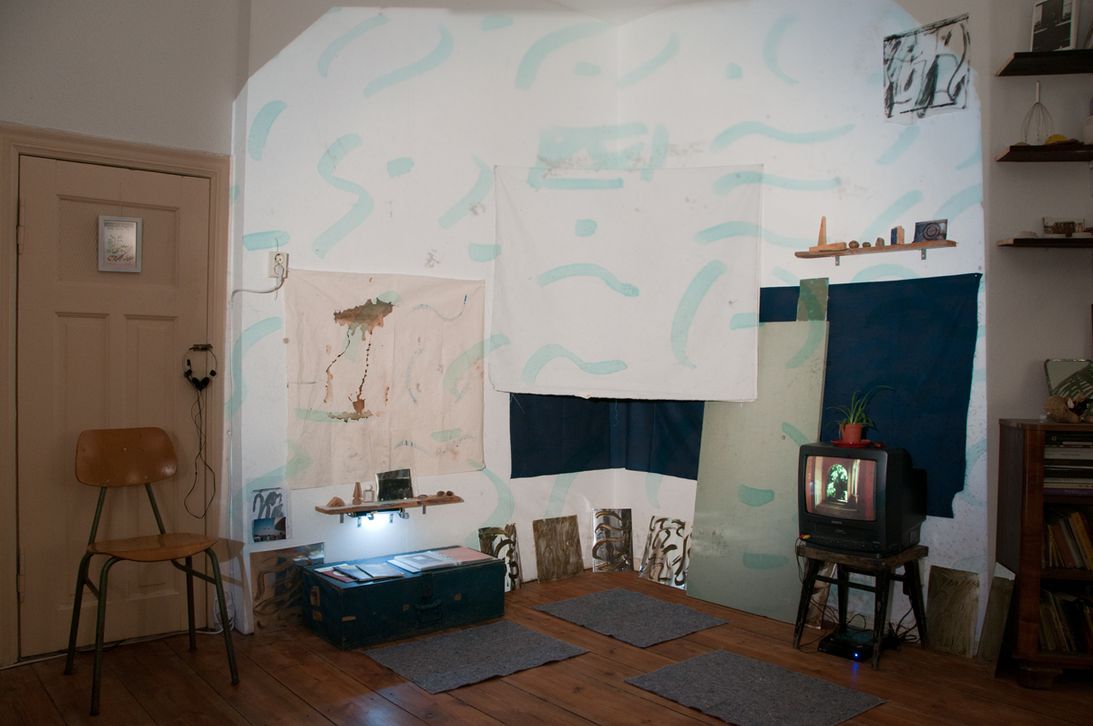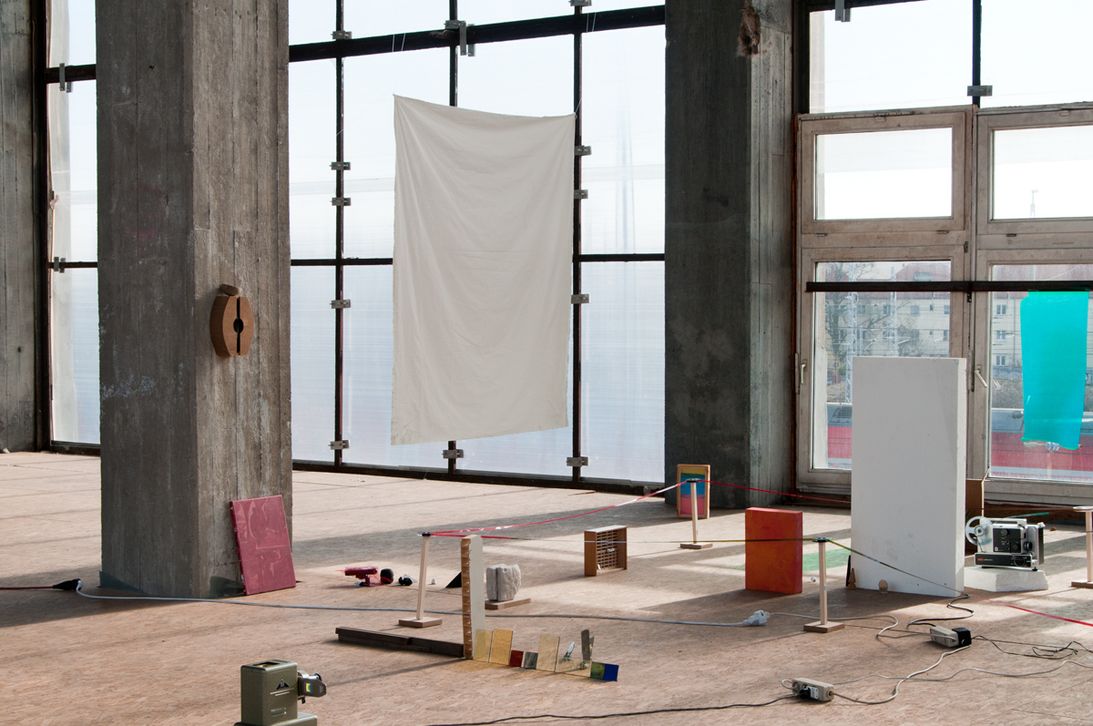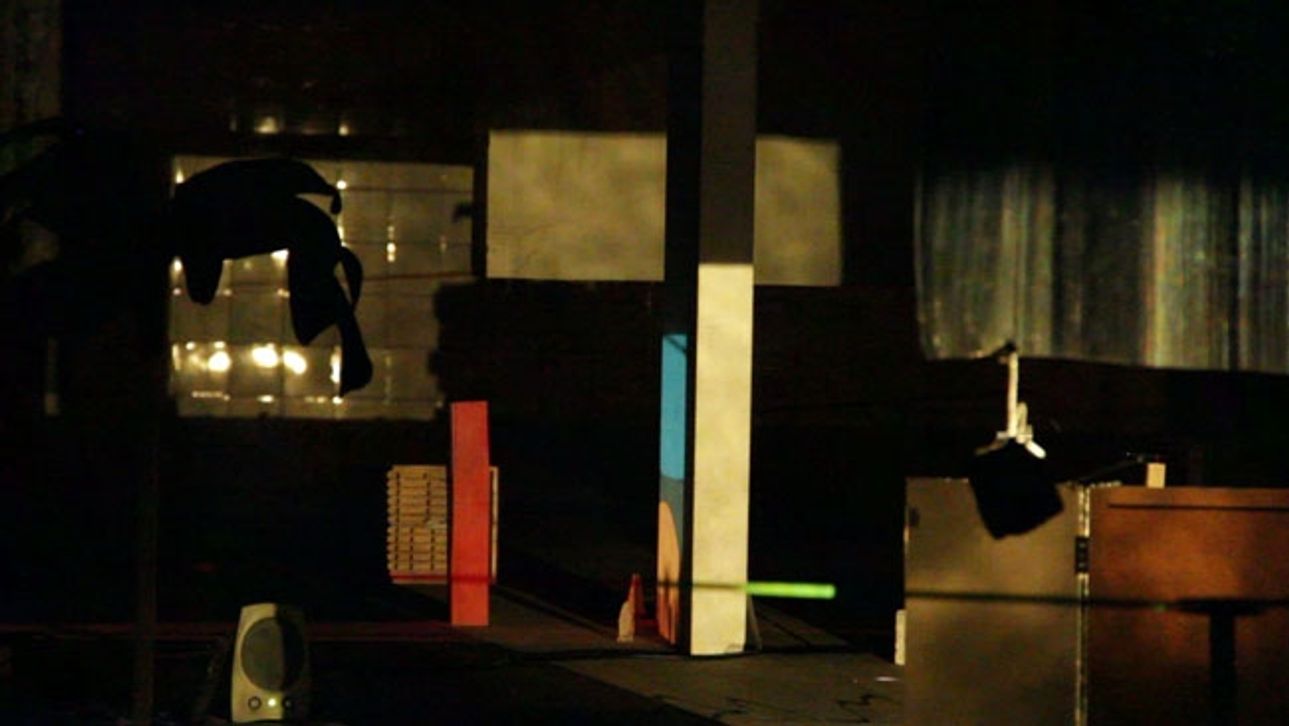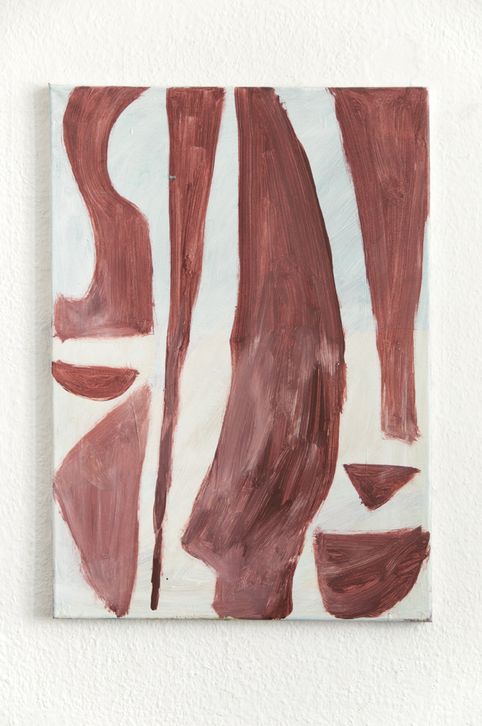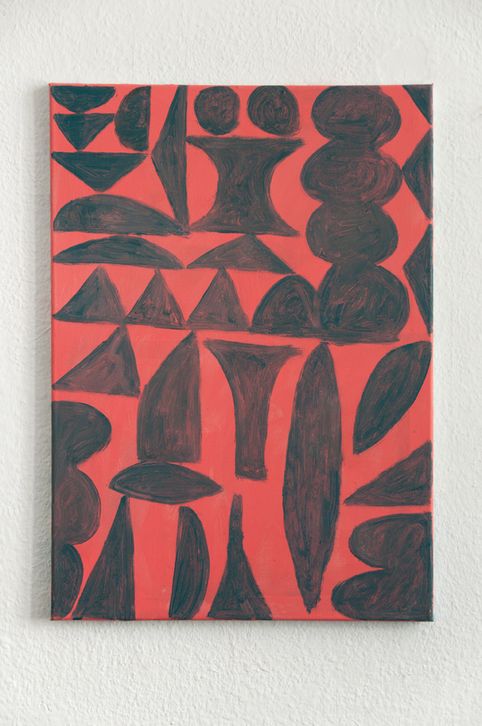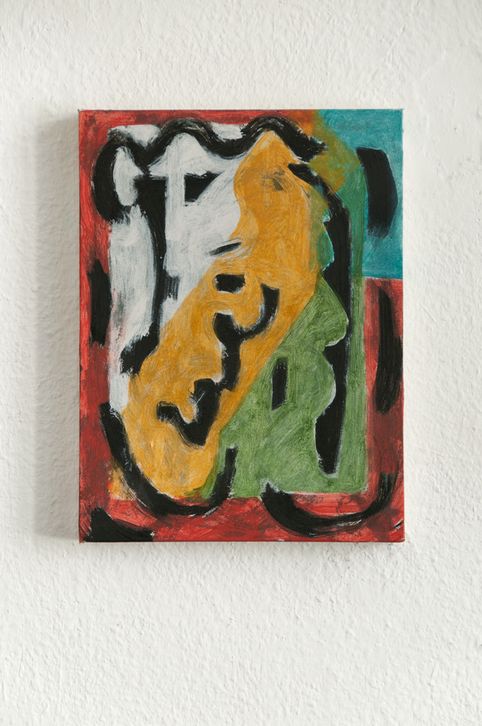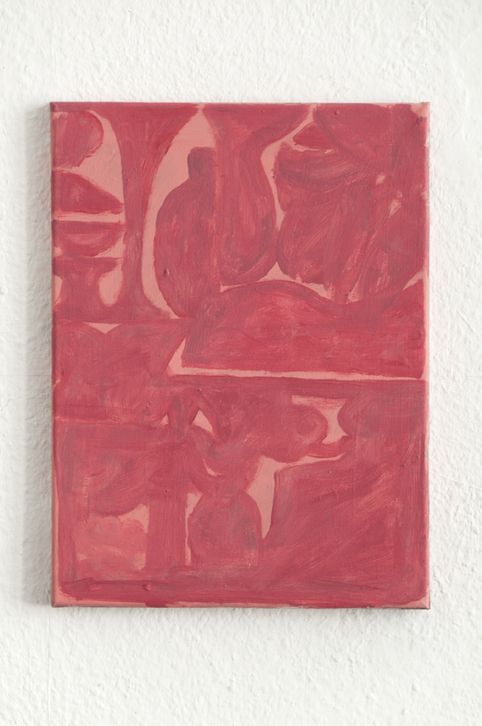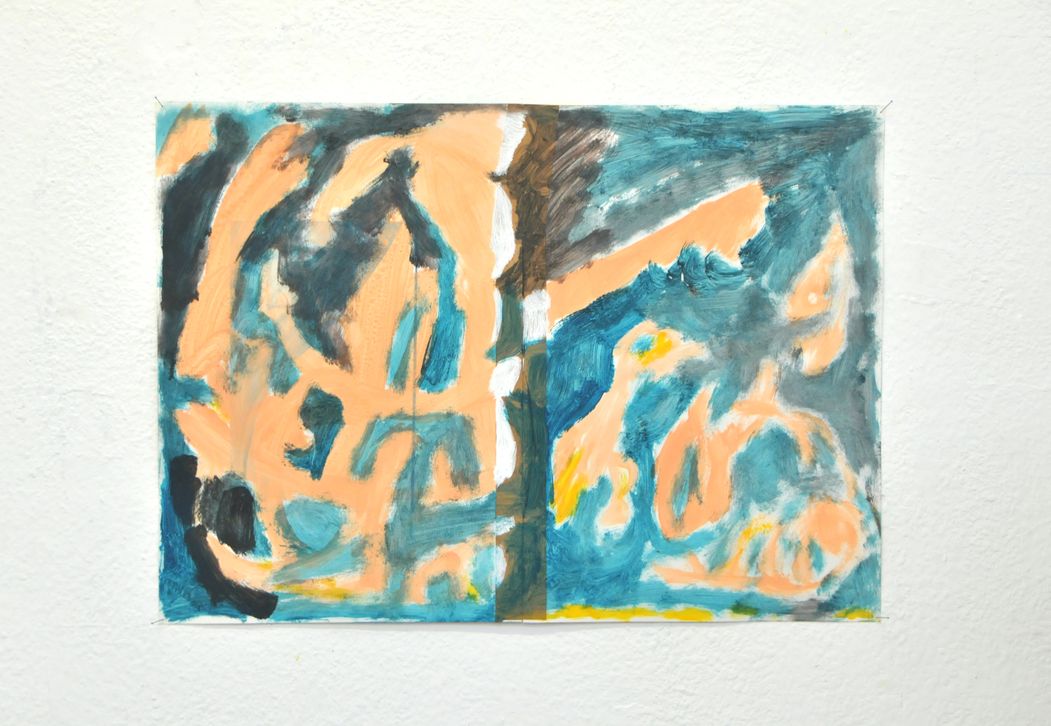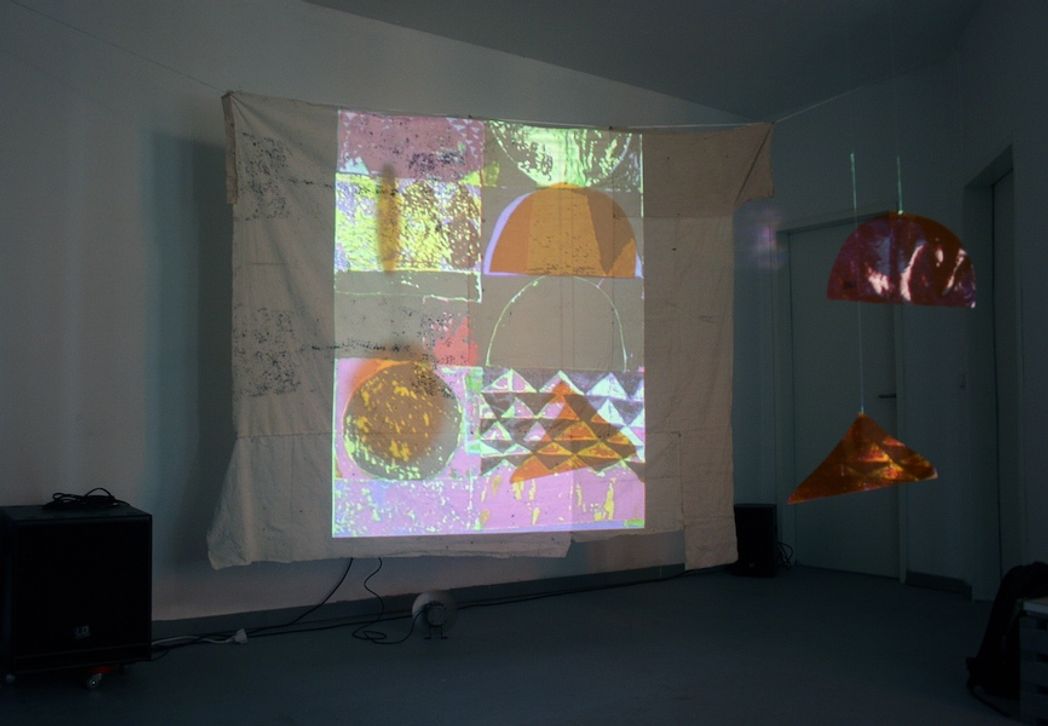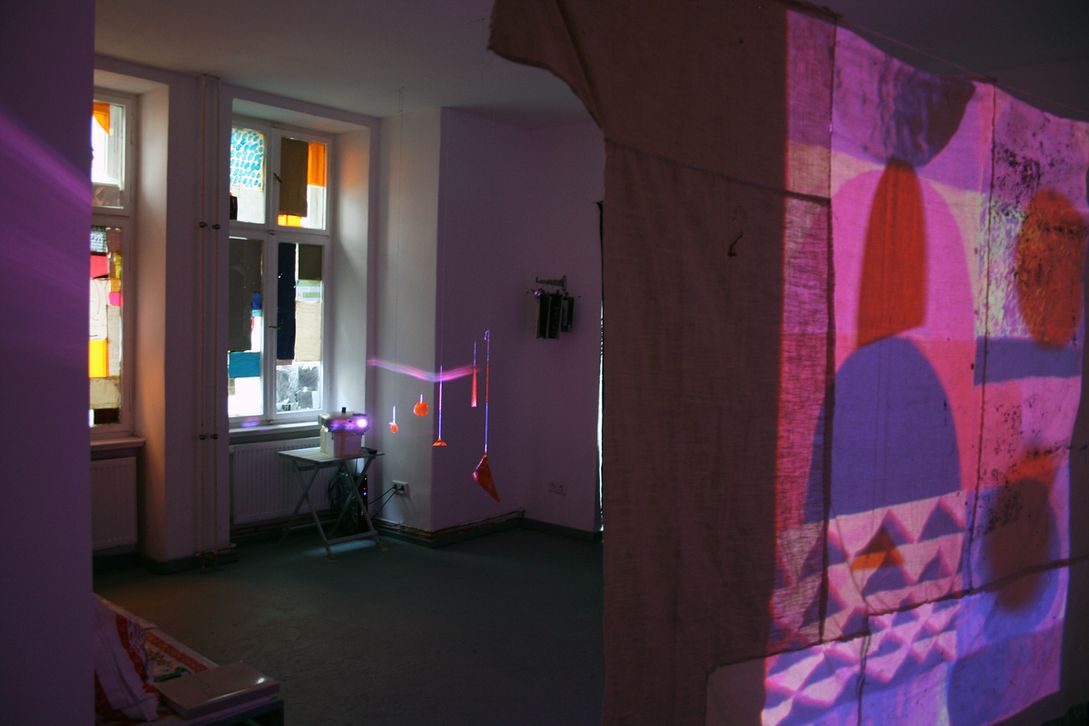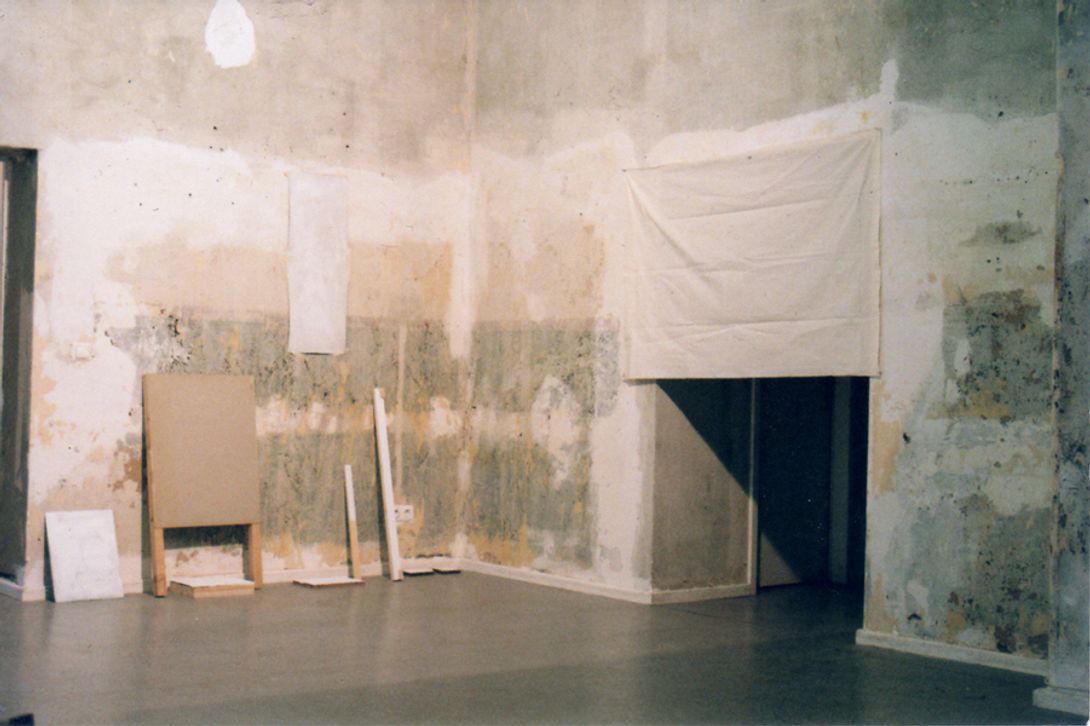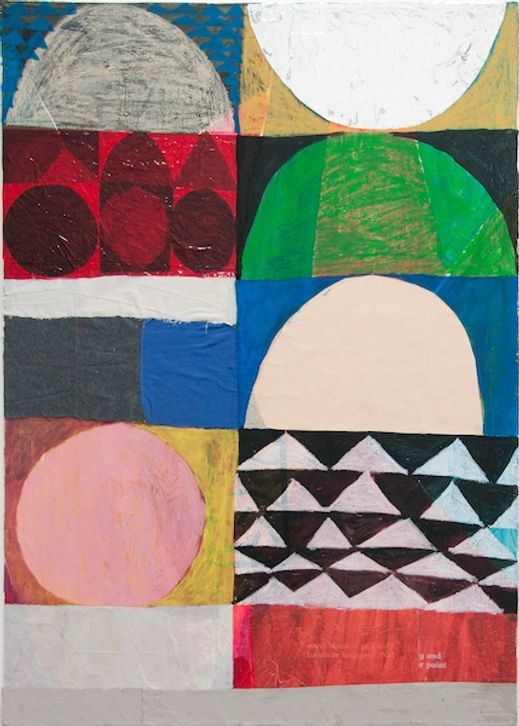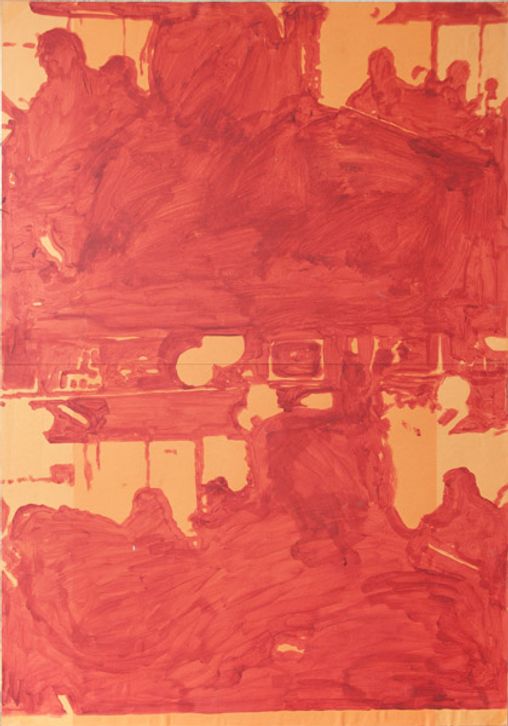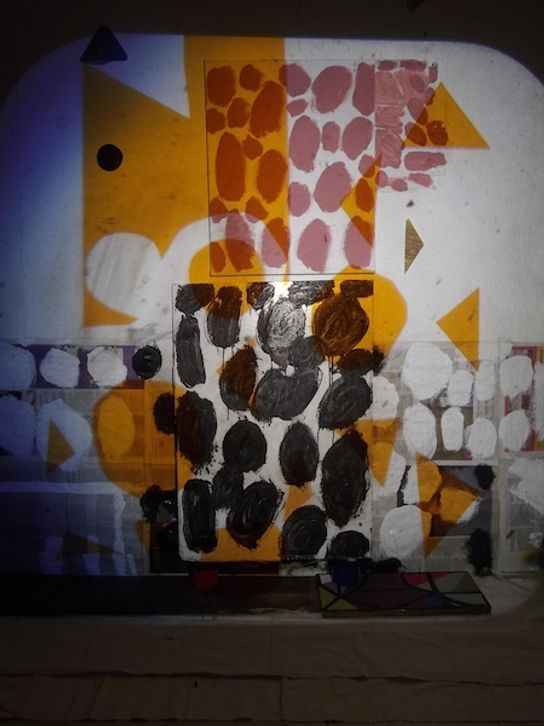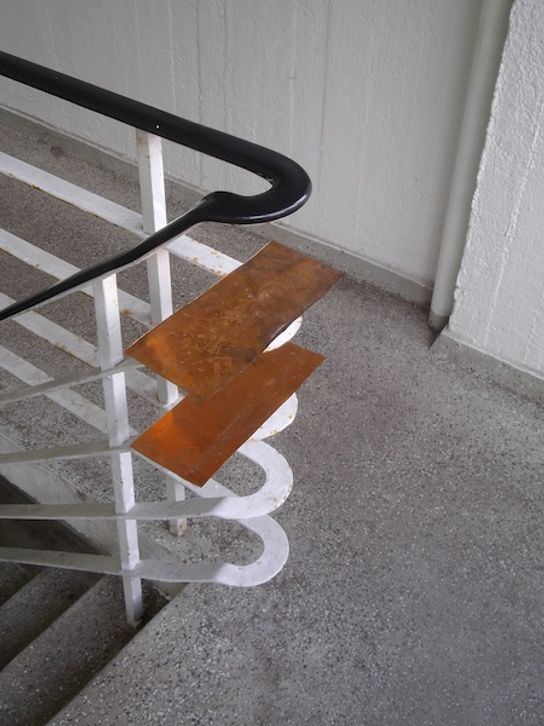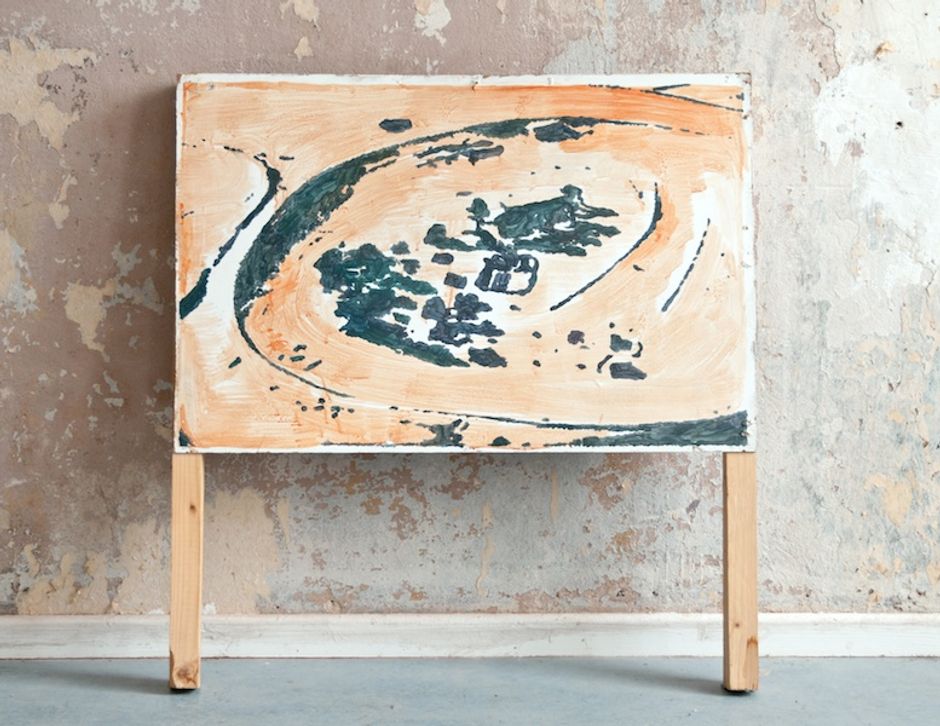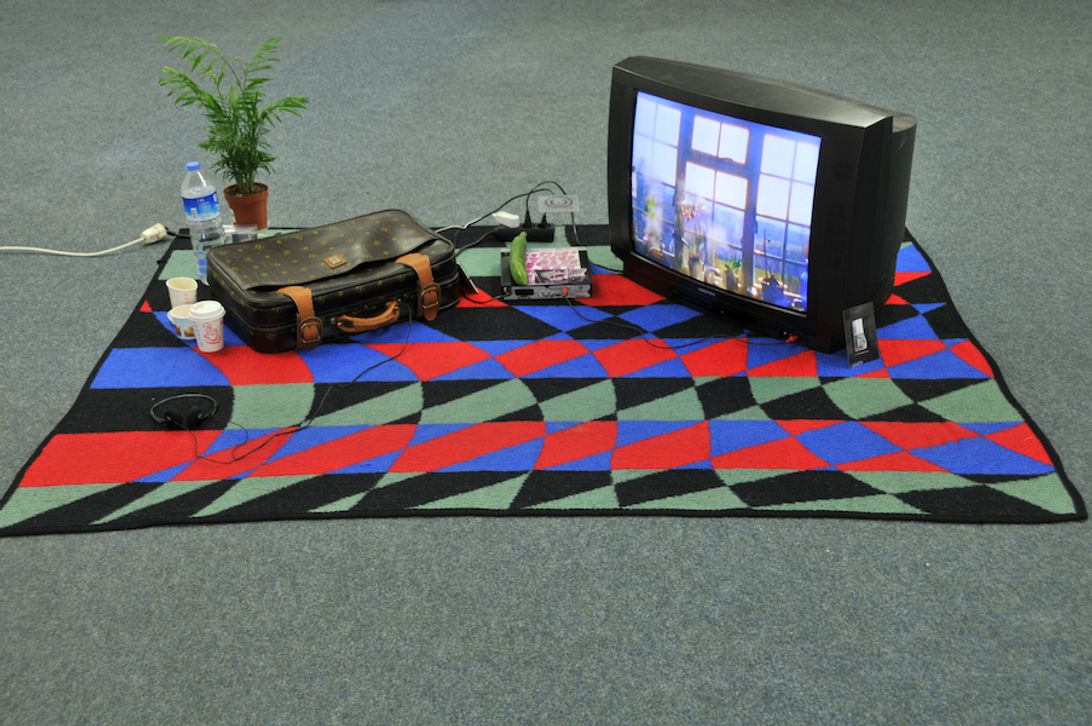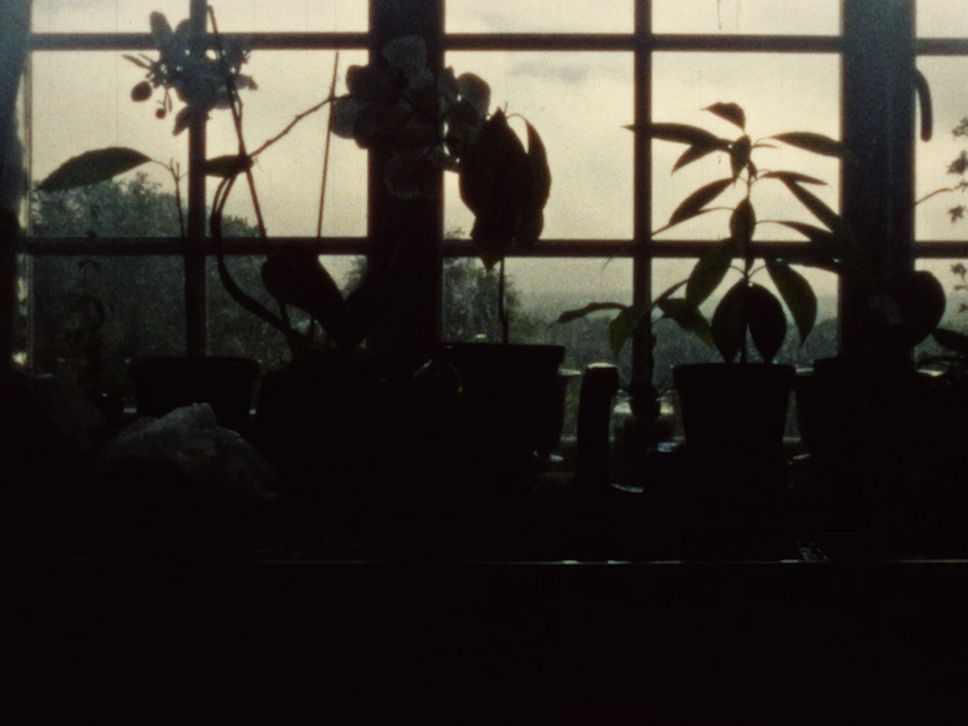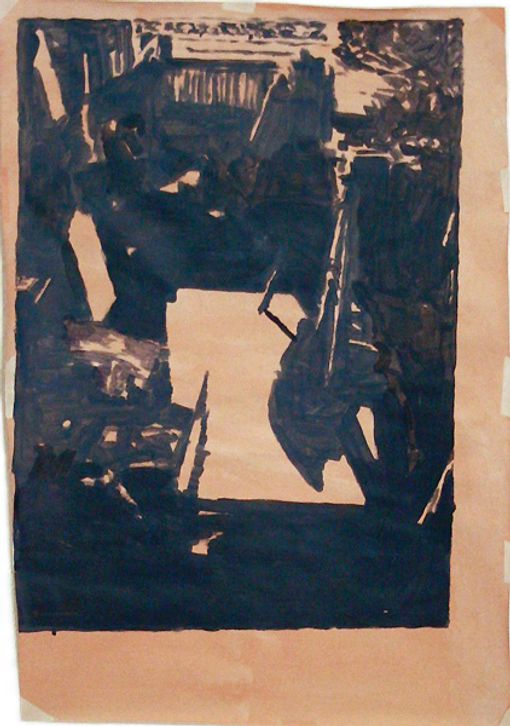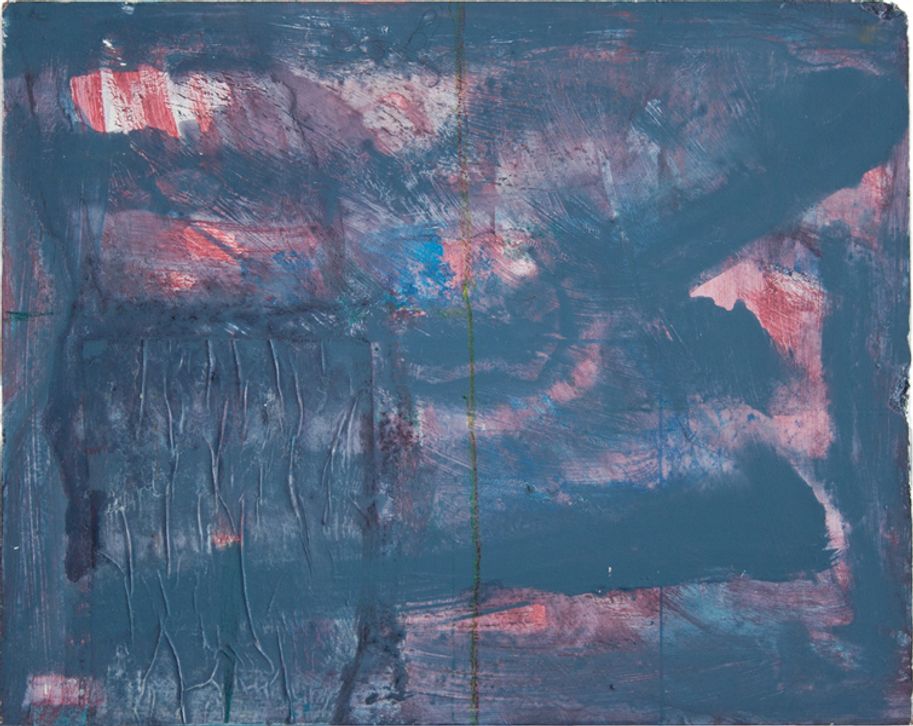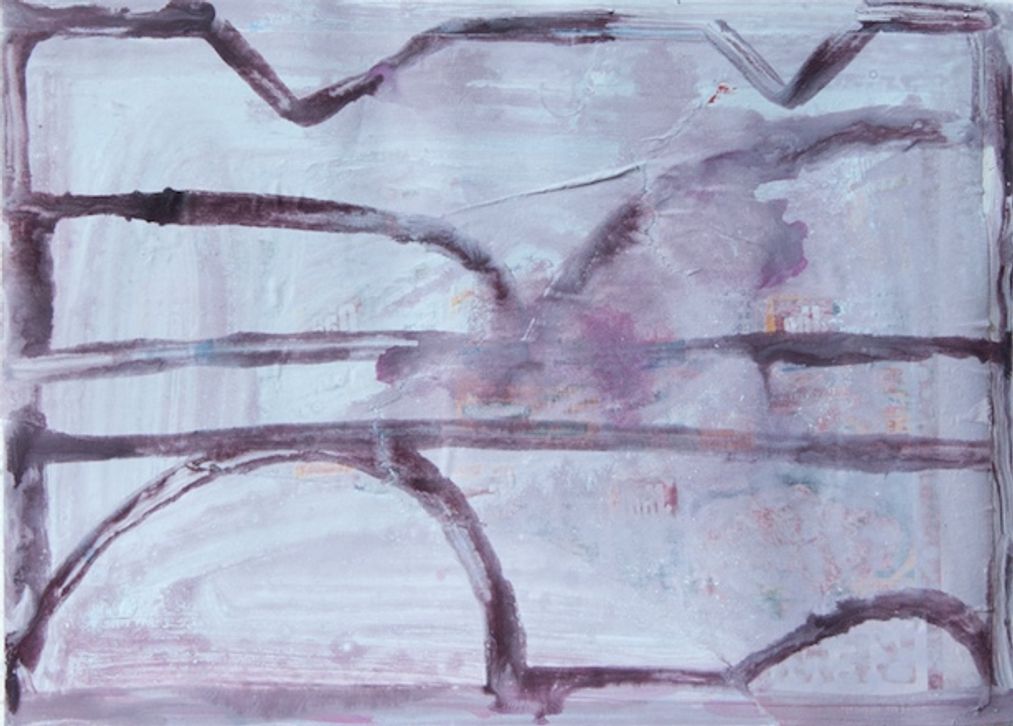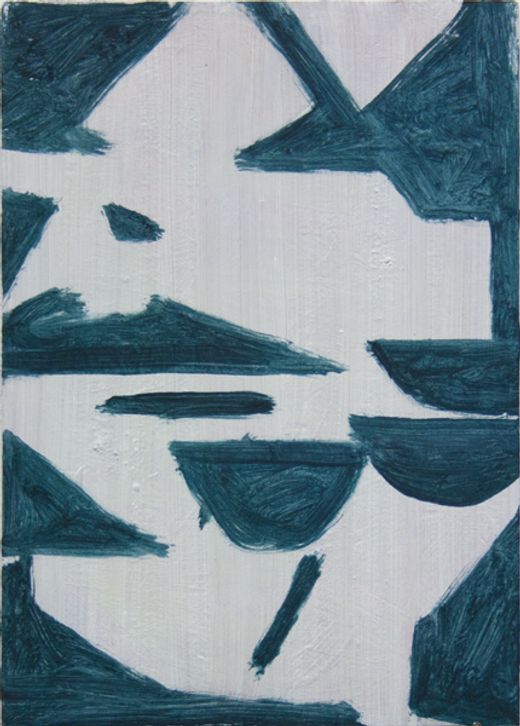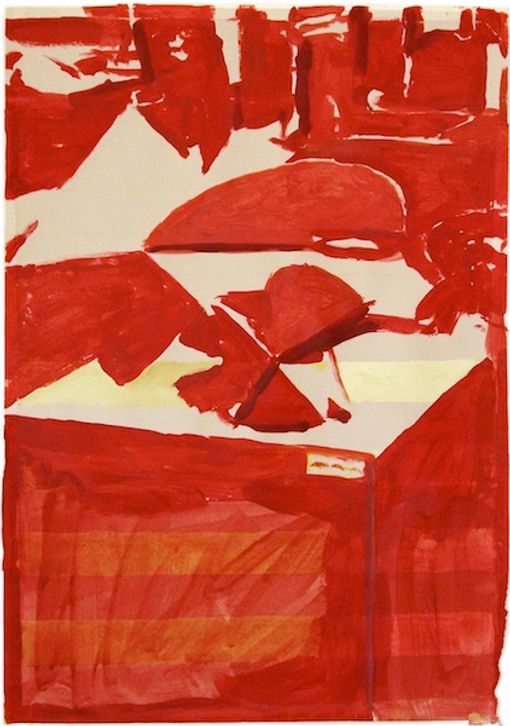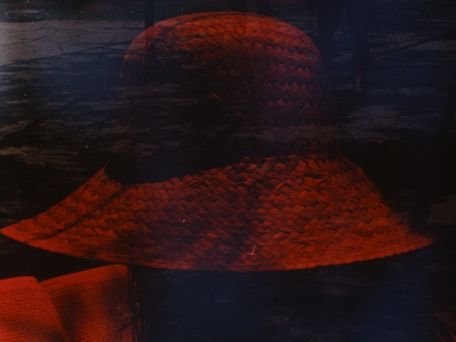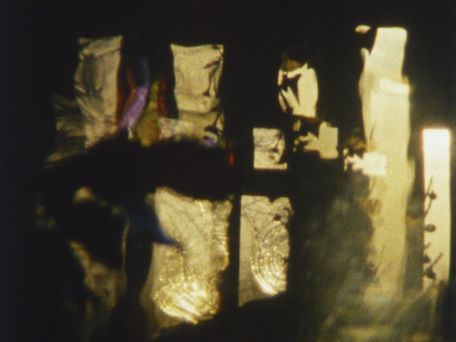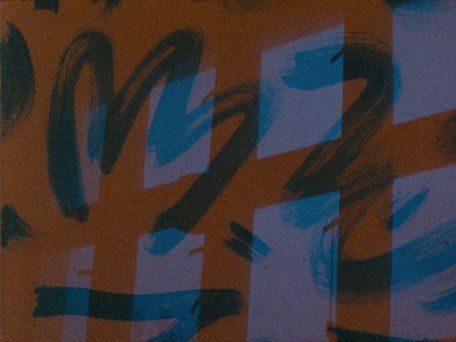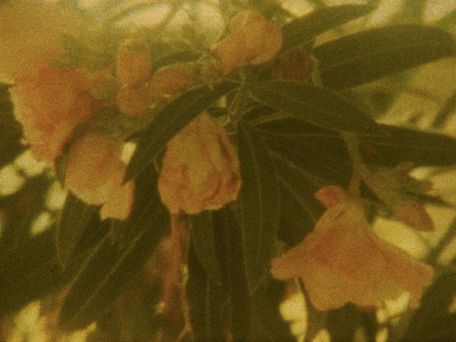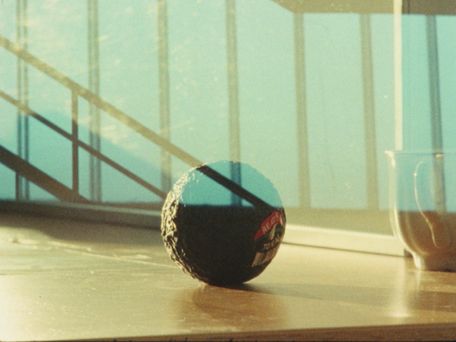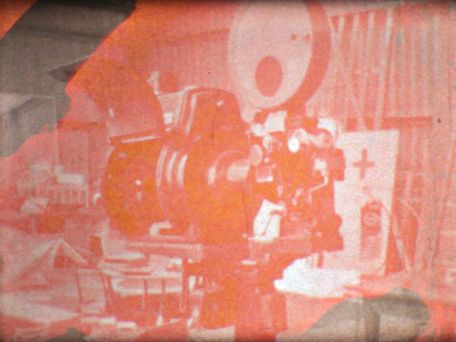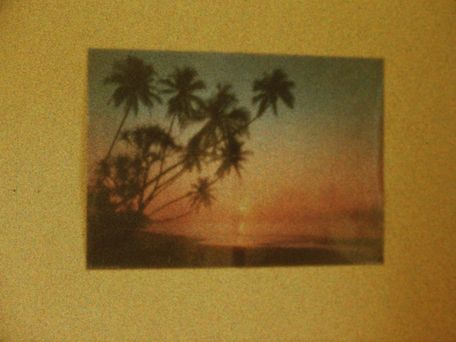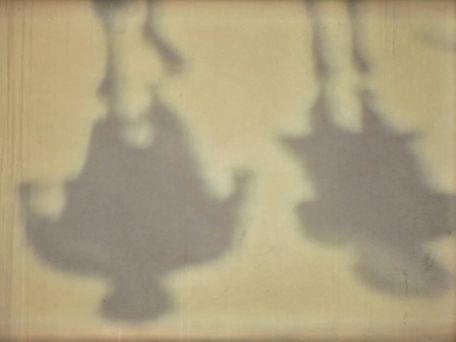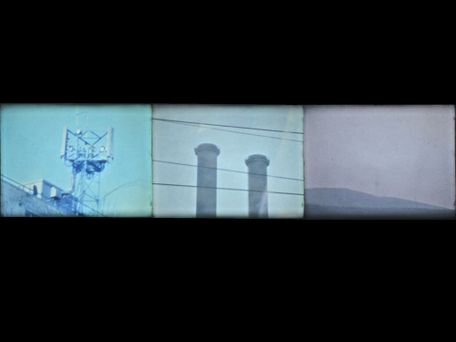FILMS
PRESS
Configurations - Lateral Film Festival (Lateral Selection 2022)
The inner gesture of the camera, embodied as the movement of the hand holding the brush; frames scribbled like title cards from the silent era. Memories are confused but it is up to the artist to configure them in new and unexpected relationships. For Edmonds, it seems that the internal/external relationship is privileged over everything else, he loves to look (from the inside) out the window, the usual light gilding the usual objects, the usual profiles – internal/external, internal/external, insistent thought of home. From the outside, one under construction, without glass, desired; from the inside, one made of only windows, with the gaze of the one who has to leave. The director knows that, in his art, the gap between thought, gesture and canvas is thinned to imperceptibility, the thought of the image is immediately the representation of the image. Perhaps this is why the foot works better than the hand in this cinema: the filmmaker paints just by walking.
https://www.lateralefilmfestival.com/lateral-selection-2022/
Configurations (2021), de JamesEdmonds - Gabriel Linhares Falcao (LIMITE Revista de ensaios e crítica de arte, 2022)
In Configurations (2021), James Edmonds achieves a consistent image, sound, spatial and temporal discontinuity that comes closer than all his previous films to polyvalence in editing. The impression here is that there is a single center that expands in different directions of disconnected space-time fragments.
At the center of this versatility, being accumulates. James, who assembles the fragments in an organic and nostalgic way, like a series of memories and quick inserts, tracing different feelings based on his relationship with the fragments, which point in different directions because they do not mix pictorially. The central regime is characterized by the relationship between the filmmaker and the 16mm camera: there is a lack of definition between the mental, due to the instantaneous relationship of the filming between the interior and the outside world, and the spectral, due to the a posteriori relationship in the montage that organizes these impressions, but certainly an embodied presence that unites the artist and the apparatus encompassing consciousness and unconsciousness, impulse and body. In this process, the inserts then become glimpses, flashes of a transit.
Among the different motifs recorded in Configurations, there is a beach region, a walk on a lake/stream, a walk through the trees of a forest, celebrations inside a residence, a lonely apartment in an apparently urban building, architectural monuments in the sky open, among others. Sometimes these are overlapped with some of his paintings. These contain thick brushstrokes that resemble Zen calligraphy, but without apparent semantics, on monochromatic plates; a simple style that studies the “inner gesture of the brushstroke”. The overlaps promote analogies and encourage the study of the inner factor between the gestures of the brushstrokes and Edmonds' quick gestures with the 16mm camera, describing the Configurations process as follows: “The small myths and personal structures that we set up to help the survival of psyche in times of low harvest. Finding subtle points of reference in the subject and camera movement, the landscape, its details and the traditions of the time, I seek to connect the exterior with the embodied camera and the interior gesture of the brushstroke.”
The editing operates with the short duration of the fragments in a way that encourages us to always want to see more, fueling an abstractionist enthusiasm in looking at the incessant. Edmonds' fragments are characterized by their short duration and determined pictorial and luminous particularities. For example, a recording of an empty urban-style apartment is filmed in low light and with a grayish tone on the film, so whenever we return to other recordings made in the apartment at nearby moments, it will have the same characteristics revealed first, typical of the roll development. Each diary fragment contains its own configurations that will not be reproduced in any space-time other than the one recorded.
The stitching of these polyvalent fragments and directions occurs in the sound, which is also discontinuous and reproduces records related to images or elements already seen in the quick montage, but in an asynchronous way to what is visualized at the moment; all belonging to one larger idea of all: James' perception. In a few moments, an image element awakens its sound equivalent instantly, but in these cases the image quickly follows its course while the sound element resonates. Edmonds, who already presented an intriguing work with the sound mesh in his previous films, now explores an even more complex seam and consequently full of possibilities.
In Configurations, polyvalence, which aims for a freedom in editing that instantly unites the most distinct and distant spaces and times, dilutes these pictorial determinations into a range of possible paths, consequently underlining the ever-present discontinuity. In his film A Return (2018), he seeks to bring together fragmentary records of southern England and Berlin into a single synthetic cinematic perception. Discontinuity is a common movement in his films, just as the transit between England, Germany and other countries is also recurrent. In Configurations, the locations visited are not determined by the viewer; we witness a study between congruence and incongruity of spaces in perception through short recordings in an expanded and at the same time synthetic sense of everyday life, which moves away from monotony and repetition, remaking itself through paths of return, like a constant journey.
The filmmaker gives us a sense of the totality of the record (we clearly remember the monument, the beach, the swamp, the empty apartments, the apartment in celebration, the apartment in the city, the journey through the water...) and an efficient communication of the feelings involved (the celebration, the solitude, the adventure), so that both are consolidated in the final result, but never reveal themselves obviously in the process.
https://limiterevista.com/2022/11/12/configurations-2021-de-james-edmonds/
(S8) XII MOSTRA DE CINEMA PERIFERICO DE A CORUÑA 2021 (Cineartemagazine 2021)
James Edmonds' film pictures always hide a trace of tension, definition and restlessness. Whether due to the absence of human beings in the images of After hours or Inside/Outside or due to their ghostly and elusive presence in Movement and Stillness or Overland, whether due to the contrast, contradiction or paradoxes that their film records convey, the world and the Reality in Edmonds' cinema seems like a continuous question that finds no answer. The clash between rural and urban reality, the passage of time, the fragmentary nature of our memory, the continuous offering that nature and objects seem to give us, our presence as simple guests in a beautiful and harmonious world and our indifference to the necessary balance of the natural world are expressive lines that seem to be intuited in some beautiful and serene frames that ask themselves at the same time that they ask us to find answers that I had never imagined or anticipated before.
https://www.cineartemagazine.com/2021/06/s8-xii-mostra-de-cinema-periferico-de.html
Seasons/Patterns - Lateral Film Festival (Lateral Selection 2021)
Four reels for four seasons, made between 2016 and 2017; patterns of lights and plants hold them together, carrying with them the atmosphere and feeling of a year that passes by. And James Edmonds, reviewing the diary form from a pantheistic point of view (Deus sive natura), watches this time unravelling in daily actions at home, in the faces of loved ones, in the proportions of common objects dissected by knives of light. The room follows the natural cycle of the world by observing the arms of trees stretching over the water or skirts dancing like rose petals. And it does not matter whether a tree is filmed or its reflection on the sidewalk, whether the light is the one of the sun or the one of fireworks: the artist, poetizing about geometry, extrapolates the shapes and loads them up with infinity.
https://www.lateralefilmfestival.com/lateral-selection-2021/
James Edmonds – Flickering Everyday - Lina Louisa Krämer (Shortfilm.de 2019)
A fleeting view of a garden through a window. The sky a radiant blue, completely cloudless. A close-up of an insect, intently pursuing its purpose. In James Edmonds’ filmic universe, only rarely does a person traverse the unfolding events as a nameless, marginal figure. The British artist and filmmaker, who was born in 1983 and studied fine arts with a focus on painting at Brighton University, has lived and worked in Berlin for several years now. Commencing with canvas and paint, he became drawn to filmmaking during his studies. He brings together both – filmmaking and painting – in exhibition settings, utilising his painted canvases partly as projection surfaces or applying pictorial gestures to the film frames to engage in the events occurring there.(...)
Full article here: https://www.shortfilm.de/en/james-edmonds-flimmernder-alltag/
A home of geometry and poetry - Mattia Fiorino (il tempo impresso, 2019)
“A journey, a home for the exiles” is the subtitle of the article presenting this pseudo-section dedicated to Laterale Selection 2019; A Return is, among the exiles, one of the most exile and in need of a dwelling, a film that makes the concept of return its raison d’être. His creation is, in fact, given by the alternation of footage of two different places that the director has impressed on film and that he overlayed according to criteria that could be defined as harmonic/musical rather than logical-syntactic.1 It is not difficult to have the sensation to be in front of what Jonas Mekas called “glimpses of beauty”, yet there are differences in the way in which these two directors relate to their personal “glimpses”.
In films such as Reminiscences of a journey to Lithuania, the subject (Mekas) is external to the object (the house) and contemplates it with a sweetness and sincerity proper to the Lithuanian director, who remains abstract (his off-screen speaking is a clear one exemplification) in the very idea of using cinema as a blank sheet on which write about memories and thoughts. Here, then, his old house is a goal, something on which focus from the outside. In A Return, on the other hand, the director is on the inside and looks outwards, his gaze projected from the house towards what lies beyond the window, the aestheticization is also intrinsically given by the form and not “attributed” to the content. In other words, the aesthetic of the “glimpses of beauty” of Edmonds differs from those of Mekas in the will to assemble “glimpses” poetically intense a priori and not made such by something that is linked to them (in the case of the second director that “something” is given by the awareness of his position towards what is taken up, awareness given by the famous writings that appear in his films and by his practice of “lyricizing” memories and thoughts).
The places of A Return transmit – in their exchange and mixing – the warmth and beauty of a nest, the faces of loved ones, animals, trees, skies: everything is home, everything is a single atmospheric representation of dwelling and proximity.
The relationship between the two places in which the film fragments were shot is interesting as an alternation and overlaying of two macro-aspects of the image: the geometric-linear one and the pictorial-sfumato one. What in fact differentiates the two locations is the director’s choice to reproduce structural elements and natural elements in the transition from Berlin to the south of England, weaving them and creating completely new forms, now angular, now curvilinear, finally merged to create a new house.
This (re)alignment of images is nothing but a mixture of suggestions sedimented in memories, a common process that concerns memory and that leads to the re-elaboration – clearly distorted – of a place that is not what it really is, and that at the same time it is what it is (the poetic truth of memory consists precisely in its opacity).
In the artist’s eyes the world is exactly the one in the works, with his personal rules and schemes. Returning to the Mekas-Edmonds comparison it is possible to clarify further the question concerning their perception of things around them.
The first one observes the world in a completely natural way (where “natural” means the mechanical representation given by the camera) and yet – here is the pleasant paradox of the director’s cinema – gives to its viewer an extremely unique and personal vision, modulated and artistically formed after the shooting and before the completed film; the second starts from a vision that is aesthetically realized in the frame itself, created by him in the moment of shooting, poetic in its completeness and realized in the symphony staged in the completed film. It could be said, remaining in the musical sphere, that the cinema of Mekas is composed of songs and that of Edmonds by instrumental pieces.
The most complete expression of this musical idea of the film is perhaps the choice of using as a soundtrack the sound of a river that meets the sea, one of the most powerful scenes to which one can think in relation to the idea of overlaying and natural interweaving of images: it is precisely in this way that the fragments of the film follow one another, according to a purely instinctive and “natural” logic, as if the images were attracted to each other and the director’s task was only to satisfy this tension/attraction. The return home is, in this case, a non-physical journey (as been said about the position of the director towards the places that have been filmed – he looks at everything from the inside. He is already at home, basically) mnemonic and evocative, in which mathematics and poetry dialogue with each other and finally converge: Mondrian and Kandinskij, Ghiberti and Brunelleschi, Policleto and Fidia, Bach and Händel. A Return is a symphony of «two worlds become one».
Toni Pipolo - Strangest Things: on Projections at the 56th New York Film Festival (Artforum, 2018)
James Edmonds’s A Return is a bracing demonstration of the continued power of montage and of 16 mm, bringing widely disparate spaces together in a manner so personal and visually arresting that it recalls the work of Stan Brakhage—all in six minutes.
https://www.artforum.com/film/tk-76939
Michael Sicinski - Toronto: Wavelengths Preview — "We Do Not Care if We Go Down in History as Contrarians" (MUBI Notebook, 2018)
There are few pleasures as profound as discovering a first-rate talent, and James Edmonds fits the bill. He has been making films for quite some time, although his work clearly hasn’t received the attention it deserves. Fortunately, a number of programmers are rectifying that with his latest film, A Return, a near-perfect marriage of impulses that are often understood as being in competition: the formalist and the personal, the structural and the atmospheric.
The film is about literal returns, as it captures Edmonds’ movement between Germany (where he was working on a film restoration project) and his home in the U.K. One observes certain things about A Return as it unspools; it’s a film that gradually teaches you how to watch it. In the first half, we see various superimpositions around the foyer of an apartment building, and these segments are notable for their rectilinear character. There are motifs: light through a stairwell, potted plants, and views of a city out the window. The superimpositions not only overlay the gridlike structure of the bannister over the organic plant forms. Edmonds also moves the camera in opposing directions, resulting in a push and pull of linear movement. These portions of the film echo the work of Stan Brakhage and Robert Beavers, but have a countervailing tension all their own.
In the second part, we are clearly back in Britain. It is not only the sheep fields or grayer weather that reveals this. Edmonds masterfully captures the palpable air of Blighty, the thick fog and the granular light that registers on the filmstrip as chunky grain. And as we see specific details—a Barbara Hepworth sculpture, or an older man backlit against the windowed wall of a kitchen—Edmonds gradually moves us out into the landscape, and finally out to sea.
Edmonds’ film is packed with small gestures that are so controlled as to virtually explore. The pan down from a stair rail, oriented on the vertical and horizontal axes, to reveal the relative chaos of a potted fern, has the power of a firework, simply because Edmonds’ camera has zeroed in on this unexpected detail. A Return is a subtle collision of these domestic micro-events, articulated with other images that capture the expansiveness of land and sea. This film is a little miracle.
Jordan Cronk - Cosmic curiosities: umpteen highlights of Toronto’s 2018 Wavelengths showcase (Sight and Sound Magazine 2018 - BFI website)
In a manner after Matsumoto and Dorsky, the 35-year-old Edmonds’s quietly astonishing A Return traverses spatial and temporal boundaries with a preternatural command of form. Comprised of two reels of 16mm film shot in Berlin and his hometown in the south of England, the film brings these disparate locales into communion with one another through intuitive juxtapositions – achieved through multiple exposures and gentle superimpositions – that marry the soft light of domestic spaces with muted coastal skies, and intimate scenes of urban and rural life with the grandeur of the natural world.
Accompanying these intoxicating images are sounds – of rushing water, whipping winds and unsettlingly alien sine waves – that the filmmaker captured on location. On evidence of A Return, Edmonds, who’s spent considerable time in recent years working with Robert Beavers (another, even more obvious touchstone), possesses an innate sense of place and a spirit of creative curiosity to match; his quicksilver montage, brisk but never hectic, manages to locate an emotionally resonant space through familiar forms, building upon tradition in fresh and inventive ways.
Alonso Castro - Tiff 2018. Wavelengths: A Return By James Edmonds, Trees Down Here By Ben Rivers (Desistfilm, 2018)
Cinema and poetry can be bonded strongly, but such an association doesn’t occur gratuitously, and one can’t expect it to happen out of the blue. The cinematographic language has the potential to explore narrative and aesthetically, achieving a harmony between what’s been represented and the representations through symbols or concrete facts.
In the case of English filmmaker (currently residing in Berlin) James Edmonds’ A Return (2018), the link between cinema and poetry is more than explicit. There’s a harmony in the composition between cut and cut that happens, in most part, because of its narrative fluidity. The movement of the film is established only through the composition of each frame, of each situation portrayed, by the camera of the filmmaker, acquiring different textures from the texture of color 16mm film, and lighting tonalities.
In A Return, there’s a vivid reconstruction through fragmented situations of quotidian life moments symbolized in images that flow in constant transposition. Edmonds’ film acquires an aura of intimacy in different environments of his life in Germany and England. Each situation is represented with austerity in the amount of shot objects; however, visual elements like color and light are the ones who conduct the composition of the image in each scenario, represented through pictorial frames.
Thus, Edmonds’ films acquire a form of poetry through the use of cinematographic resources –such as lighting, colors or movement- to compose the situational frames, in low, subtle key, of the scenes of his everydayness in rural and urban spaces of Germany and England. The poetic potential of cinema is exploited in A Return, focusing the gaze in those insignificant fleeting moments of quotidian life.
http://desistfilm.com/tiff-2018-wavelengths-a-return-by-james-edmond-trees-down-here-by-ben-rivers/
Toni D’Angela - Chaos Versus Frame: in conversation with James Edmonds (intro) (la furia umana 28, 2016)
The cinema of James Edmonds (1983) explores the complexities of the real not as a mere substance named “reality” but in its most fluctuating and Turnerian correlation, in those uncertainties that make it impossible to fix it in any specific point in space. A splendor in the world. His last film Movement and Stillness (2012-2014) assembles a series of motives and topics that are recurrent in his work and that situate him within a tradition bringing together Peter Gidal, Leighton Pierce and even Jean-Claude Rousseau. A poetics of space. Edmonds composes a poem about inhabited spaces, a dialectics without synthesis between the internal and the external. The almost fixed frame moves as if it were shaken by the wind, in the same way hung up clothes swell, the camera cuts across rooms, the exposure to the light makes the composition of the images iridescent: stains, halos, colours. The immeasurable intimacy of the house, the intimacy of the open space, the flesh of the bodies, the vapors, the stain glasses that evoke the work of Joseph Albers, the chiaroscuro produced by the shutters, the windows from which the trees outside appear – the ramifications of Being – all of this united by the very fast and kaleidoscopic montage. Movement and Stillness is an “aleph” in which the seasons alternate (the snow and the flowers), and with them the day and the night, the lights and the shadows, figuration and abstraction.
Since After Hours (2005) Edmonds intertwines the mobile and the immobile, the internal and the external. In this work an office building is almost like a moving film: the lights from the windows shine in the night as if they were film perforations sliding. Handheld camera, panoramas, still lives and improvised rhythms. Night and day. Space is not just something we simply inhabit. A deserted building is like a film: it has a history that is revealed by the play of light and shadow on the various elements that compose this space. Also Inside/Outside (2008/2015), that begins with a flirtatious interaction between the clear and the blurry, is like the previous film filled with corridors that, through superimpositions, cross over each other – or perhaps only one or just a few. A constellation of internal and external forms, in a continuous return, moving from closed to open form, from one film to another. Overland Collages (2015) is his most fragmented and abstract work, with echoes of Norman McLaren, a string of lines-force, in fact, from Movement and Stillness.
The segmented and associative montage of Edmonds is not governed by cuts seeking to connect signifier and signified but rather by a lacanian capitoné point (or cushioning). This is an anti-representational and anti-narrative knot, which makes the signifier/signified relation a more dynamic, fluid one, and which does not work with a descriptive language but institutes a topography of desire – a fabric weaving itself with an already existing one. A flux as infinite as desire. A ramification through the frame of windows that open wide the splitting of Being, as a work in progress Sternwarten der Welt. It is not in any case a form of welding – a simple intersection organized around anchor points – but rather a collage inspired by Burroughs’ cut-ups, as it is intimated in another of his works in progress, We all live in the Blue Image Forever. In this case a lyrical quality speaks of another inspiration of the filmmaker, Stan Brakhage.
James Edmonds
born 1983, Eastbourne, UK
lives and works in Berlin
Exhibitions & Screenings
2025
Sessão Babel, Cinemateca do Museu de Arte Moderna, Rio de Janeiro, Brazil
Light Field, The Lab, San Francisco, USA
First Look - Illuminations (Avant-Garde Shorts), Museum of the Moving Image, New York, USA
Simsang: IMAGERY, Sorigrim, Seoul, South Korea
2024
Unikat – Film, Kunstverein Neukölln, Berlin
Von Berlin nach Saint-Nazaire, (in context of MIRE residency), Saint Nazaire, France
Crossroads, Grey Area, San Francisco
EXiS - Experimental Film and Video Festival in Seoul, Seoul, South Korea
Whirling Silently in Space, Hilbertraum, Berlin
Frontera Sur, festival Internacional de Cine de No Ficción, Chile
Terra: Reconfigurations of Perspective, Art Cinema OFFoff, Ghent, Belgium
Open City Documentary Festival, London
Drag-On! (group exhib. w. Kai Teichert) Galerie Z22, Berlin
Convulsion / Eruption, Fondation Albor, Mataas Na Kahoy, Batangas, Philippines
2023
Laterale on Tour, Knulp book bar, Trieste, Italy
Fracto, Experimental Film Encounter, Acud, Berlin
Transient Visions: Festival of the Moving Image, Spool Contemporary Art Space, Johnson City, NY, USA
Currents NYFF, New York Film Festival, New York, USA
Hanging out in querformat (performance as JEPG, w.Petra Graf), Kwia, Berlin
Recent S8-Works / Frankfurt Forms, Städelschule, EXFF, Frankfurt, Germany
I Know Someboday Who Knows Somebody, Grass Harp, Exrotaprint, Berlin, Germany
Distant Messaging, aCinema, Milwaukee, WI, USA
Dawn Chorus, (performance w.Petra Graf), Enttäuscher Mich 24h Frühstück, Haus der Statistik, Berlin
Underneath the Floorboards, London, UK
2022
Frontera Sur, festival Internacional de Cine de No Ficción, Chile
New York Film Diaries, New York
Engage Experimental Film Festival, Northwest Film Forum, Seattle USA
Lightfield in LA, Mezzanine / Lightfield, LA Filmforum, LA
Crossroads 2022 Online Echo, online at sfcinematheque.org
DOBRA - Int’l Experimental Film Festival, Cinemateca do MAM (Rio de Janeiro/Brazil)
Open City Documentary Festival, London
Laterale, Cinema San Nicola, Cosenza, Italy
Crossroads, Grey Area, San Francisco
Babfilmfest, Matchstick Piehouse Deptford, London
Non-Syntax, Taipei, Taiwan
Fracto, Experimental Film Encounter, Acud, Berlin
Prismatic ground, Maysles Documentary Center, New York
Machinalive, Nomadica at LABA 2022, Brescia, Italy
Peripheries - Natural States, (online)
Chapters And Remnants: The Films Of James Edmonds (solo program), Spectacle, Queens, New York
First Look, Museum of the Moving Image, New York
FICUNAM - Umbrales, Mexico City
FLorida EXperimental Film and Video Festival (FLEX), Tampa, FL
Coming Into Focus, Ultradogma Virtual Film Festival, Berlin (online)
2021
Festival internacional Signos da Noite, Lisboa (online)
Großes Kino Kleines Kino, Silent Green, Berlin
Prisme#4 (MIRE), Le Cinématographe, Nantes, France
1st Annual Light Matter Film Festival, Alfred, NY, USA
Engauge Experimental Film Festival, Seattle WA, USA
Transient Visions: Festival of the Moving Image, Spool Contemporary Art Space, Johnson City, NY, USA
Fracto Experimental Film Encounter, Acud, Berlin
Mur Murs, Redcat Cal Arts Theater, Los Angeles, USA
Channeling Structures, (group exhib./screening), S-L-I-C-E, Uferstudios, Berlin
Laterale Film Festival, Cinema San Nicola, Cosenza, Italy
EXiS - Experimental Film and Video Festival in Seoul, Seoul, South Korea
A Tiny Bit Of Fire (group exhibition), Warbling Collective, 139 Whitfield Street, London
Underneath the Floorboards, London (online)
Internationale Kurzfilmtage Oberhausen, Germany (online)
Screener Short Films, Hackney, London (online)
2020
Strom/Situation, performative screening, Artspring Berlin (livestream online)
Istanbul Experimental Film Festival, Istanbul (online)
Großes Kino, kleines Kino #33: Die Kunst der Filmprojektion, Kino Arsenal, Berlin
2019
Cámara Lúcida, Cuenca, Ecuador
Nomadica – Weekend On the Moon 2019, Menomale, Bologna
Headroom Screening Series, University of Iowa IA
Too Close To Home, Shadowbox Studio, Durham NC
Eureka University Film Festival, Bogota, Colombia
Melbourne International Film Festival (MIFF), Melbourne
Experimental Competition, Curtas Vila do Conde, Portugal
Inside/Outside (solo film program as installation), Studio Im hochhaus, Berlin
Laterale Film Festival, Cosenza, Italy
Fragments Past and Present (solo screening), Artsrping, Atelier Spitzmüller, Milchhof e.V, Berlin
Braziers Mini Indi Film Festival, ,Oxfordshire, UK
Fracto Experimental Film Encounter, Acud, Berlin
Short Cuts #6 (solo film presentation), Kunsthalle Mainz, Mainz, Germany
Internationale Kurzfilmtage Oberhausen, Oberhausen, Germany
Spectral Film Festival, Stevens Point, WI
Ann Arbor Film Festival (AAFF), Ann Arbor, MI
Light Field, San Francisco, CA
FLorida EXperimental Film and Video Festival (FLEX), Tampa, FL
2018
Istanbul Experimental Film Festival, Beyoglu Yesilcam Cinema, Istanbul
Swedenborg Film Festival, The Swedenborg Society, London
James Edmonds - Films with soundtracks, w. Michael Freerix, Studio Im Hochhaus, Lichtenberg, Berlin
Compressed Air, Houston Cinema Arts Festival, Houston Cinema Arts Society, Houston, TX
Weekend Coi Morti, Nomadica, Spazio Menomale, Bologna
Transient Visions, Spool Contemporary Art Space, Johnson City, NY
Projections NYFF, New York Film Festival, Film Society of Lincoln Center, New York
The Unseen Festival (Separated by the Sea), Counterpath, Denver, CO
TIFF Wavelengths, Toronto International Film Festival, Toronto
Kinodot Experimental Film Festival, St. Petersburg
Expo2001∞ (group exhibition), Argh!, Berlin
Fracto festival, ACUD macht neu, Berlin
Untitled, solo audio-visual super8 performance, Spektrum, Berlin
Light Movement 29: Spring Portraits, 21st April, Spektrum, Berlin
Cinema Parenthése, solo film presentation, Greylight Projects, Brussels
Process Experimental Film Festival, Riga
2017
ULTRAcinema, Puebla, Mexico
Idiosyncratics label night (audiovisual performance), Cafe Central, Brussels
Âge d’Or Festival, CINEMATEK, Brussels
Light Movement Athens (as part of 11472CTY) Open Air Cinema Riviera, Exarcheia, Athens
11472CTY (exhibition w.Petra Graf), 3 137, Athens
Fracto festival, ACUD macht neu, Berlin
Process Experimental Film Festival, Riga
NE555, (solo screening +performance w. Nicola Tirabasso), Kinodromo, Bologna
Nocturnal Reflections (solo screening +performance w. Nicola Tirabasso), Macao, Milan
Metronomics, Another Vacant Space, Berlin
Autogestión (as part of Adam Nankervis' MuseumMAN piece), Fundació Joan Miró, Barcelona
Underneath the Floorboards, Hackney Attic, London
2016
The Material Question, (solo presentation) Directors Lounge, Z-Bar, Berlin
Overland - an Overview, (solo presentation/ edition launch) Grass Harp, Berlin
Sound Projections, film performance with live soundtrack, with Sylvia Schedelbauer & J. Surak, Spektrum Berlin
[auslands-filme], (solo presentation) Ausland, Berlin
Light Movement 11, Spektrum, Berlin
2015
Another Vacant Space at Summa Contemporary, Madrid
Idiosyncratics label night (audiovisual performance), Cafe Central, Brussels
Fronteira International Documentary and Experimental Film Festival, Goiânia, Goiás, Brasil
Overland Collages, film performance with live soundtrack, w. Esel Durch Wiederholung, eXperimontag, Mme Claude, Berlin
The Temenos Screening, Kino Xenix, Zurich
2014
It Narratives: The Movement of Objects as Information (for David Horvitz exhibition), Franklin Street Works, Stamford CT, USA
Vom Anhalten des Verschwindens (group exhibition), Lamspringer September, Lamspringe, Germany
The Marble Publicist (performance with Daniel Kupferberg), Superposition, Lehrter Siebzehn, Berlin
The Silence of a Movement, curated by Susanne Neubauer and HBK Braunschweig. Another Vacant Space, Berlin
2013
Dumbo Glow - Winter Videos in The Triangle, Curated by Leo Kuelbs and John Ensor Parker, New York
The Cuttıng Room, Nottingham Playhouse, Nottingham, UK
Material Cinema (Blue), film performance with live soundtrack, Salon Bruit in Tiefgrund, Berlin
Material Cinema, (solo exhibition/film performance, live sound), Echo Buecher, Berlin
<<ANTENNAE>> (within exhibition of Daniel Kupferberg) Another Vacant Space, Berlin
2012
Light Movement Music, film performance with live soundtrack, Kunstfabrik am Flutgraben e.V, Berlin
Compounds of a Prism, Another Vacant Space, Berlin2011
Freitag Kino 4, august 20th, tamtamart, Berlin
Leistungsschau, Kunsthalle am Hamburger Platz, 10. bis 30. Juni, Berlin
Black Stars on a White Sky, 28th april-1st may 2011, Another Vacant Space, Berlin
grand officiallee opening of "................" / Opacity Materials (solo presentations/film screenings), wflctn at Artport, Berlin
2010
Accidents/incidents and unpredicted events, Kinosaal in K77, Berlin
But what about the noise of crumpling paper..., wflctn at Artport, Berlin
Temporary Roots, (solo presentation) tamtamart, Berlin
File #1, an exhibition by St. & St., The Foundry, London
Glow, Z-Bar, Berlin
2009
Inside Outside, film performance with live soundtrack, 113 Dalson Lane, London
Films Without Music (curated), Staalplaat Working Space, Berlin
A Spires Embers (Museum MAN), Eidos Foundation/Gogolfest, Mystetskyi Arsenal Lavra, Kiev
Should The World Break In (MuseumMAN) Bereznitsky Gallery, Kiev
Reliquaries of Empires Dust (MuseumMAN) Bereznitsky Gallery, Berlin
Mobile, Norwich Arts Centre, Norwich UK
2006
Live Sound and Super8 Films (audiovisual performance) with Lara Schroder, Electronic Church, Berlin
Oil Rig Catering, The Permanent Gallery, Brighton (as part of Oil Rig Catering tour)
2005
Art in the Age of New Technologies, ACCEA, Armenia
Progart, University of Brighton, Brighton UK
-
Music performances at various locations mostly between 2006 and 2013
Grants, awards & residencies
2024 MIRE / Spectral Wandering Residency (w. Petra Graf), Saint Nazaire, France
2022 Short Film Funding, German Federal Film Board (FFA), Berlin, Germany
2020 Nomination for The German Film Critic's Prize 2019: Best Experimental Film, Berlin, Germany
2019 Special Mention, German Competition Internationale Kurzfilmtage Oberhausen, Oberhausen, Germany
Selected press & publications
Gabriel Linhares Falcão, Configurations (2021), de James Edmonds in LIMITE Revista No.8 (published in 2022) at [limiterevista.com]
José Manuel Cruz Barragán, (S8) Mostra de Cinema Periferico in Cinearte Magazine (published in 2021) at [cineartemagazine.com]
Carolina Reyes, Seasons/Patterns (James Edmonds) & Glimpses From… (Ute Aurand) in El Cine Probablemente (2021)
Lina Louisa Krämer, James Edmonds – Flickering Everyday in Shortfilm.de (published in 2019) at [shortfilm.de]
Mattia Fiorino, A Home of Geometry and Poetry in il tempo impresso (published in 2019) at [iltempoimpresso.com]
Fred Balz, Kurzfilmabend in der Mainzer Kunsthalle in Mainz Allgemeine Zeitung (2019)
Toni Pipolo, Strangest Things: on Projections at the 56th New York Film Festival in Artforum (published in 2018) at [artforum.com]
Michael Sicinski, We Do Not Care if We Go Down in History as Contrarians in MUBI Notebook (published in 2018) at [mubi.com]
Jordan Cronk, Cosmic Curiosities in BFI Sight and Sound Magazine (published in 2018) at [bfi.org.uk]
Alonso Castro, A Return (James Edmonds, 2018) in Desistfilm (published in 2018) at [desistfilm.com]
James Edmonds, Overland: An Overview by Grass Harp (2016, 2nd edition 2021 (booklet only))
Toni D’Angela, Chaos Versus Frame: James Edmonds in La Furia Umana No.28 (published in 2016) at [lafuriaumana.it]
Toni D’Angela The Splendor Of The World, in La Furia Umana No.26 (published in 2015) at [lafuriaumana.it]
Professional contributions
2024: Co-curator (w. Petra Graf), Von Berlin nach Saint-Nazaire/MIRE, Saint Nazaire, France
2023: Workshop leader, Gustave Eiffel Schule/Freie Kunst AG, Berlin, Germany
2023: Co-curator (w. Petra Graf), Grass Harp/I Know Someboday Who Knows Somebody, Berlin, Germany
2023: Workshop leader, Clavis Schule/Multimedia Art, Berlin, Germany
2023: Workshop leader, Gustave Eiffel Schule/Animation AG (with Petra Graf), Berlin, Germany
2021: Curator, S-L-I-C-E/Ufer Studios/Channelling Structures (group exhibition & film screening), Berlin, Germany
2015-2018: Curator, Spectrum/Light Movement (film screening series), Berlin, Germany
2017: Curator, Hotel Maria Kapel/Architectural Collage (guest of artist in residence Alanna Lawley), Hoorn, The Netherlands
2017: Curator, Cinema Riviera/The Outskirts of a Dreamed Map (as part of the exhibition 11472CTY), Athens, Greece
2017: Workshop leader, 3 137/Super8 film & Slide-making workshop (with Petra Graf and KID-A), Athens, Greece
2016: Workshop leader, Herder Gymnasium/Visual Poems without Sound, (with Ute Aurand), Berlin, Germany
Contributed texts
Helga Fanderl, Konstellationen Super 8. Berlin: Hatje Cantz Verlag, 2023
Jeannette Muñoz - The Landscape As a Sea, Revista Lumiere, 2017
La Furia Umana No. 27, To Stan Brakhage, La Furia Umana, 2015
-
BIO / CONTACT
James Edmonds is an artist and filmmaker from England currently living in Berlin. Taking various forms, such as films, paintings, sound, writing, drawing, ceramics and installation, his work is driven by personal observations of his immediate surroundings and a poetic approach to the everyday that is both formallist and lyrical. The varying qualities of light, our subjective experience of time, space and memory are often thematically present in the visual resonance of his films and paintings.
His films have been shown at various international festivals including Toronto International Film Festival, New York Film Festival, Museum of the Moving Image New York, Ann Arbor Film Festival, Kurzfilmtage Oberhausen,Curtas Vila do Conde, Open City London, FICUNAM Mexico City, and EXiS Seoul. Solo presentations have taken place at (S8) A Coruña, Experimental Filmtage Frankfurt, Cinéma Parenthèse Brussels, Nocturnal Reflections Milan and Ausland Berlin.
Since 2017 he has collaborated with artist Petra Graf on films, installations and live performances. He also writes occasional texts on films, teaches workshops for young adults and children, and has organised various film-screenings and exhibition events including the film series Light Movement (2015-2018) and the exhibition series Grass Harp with Petra Graf (2016-present).
